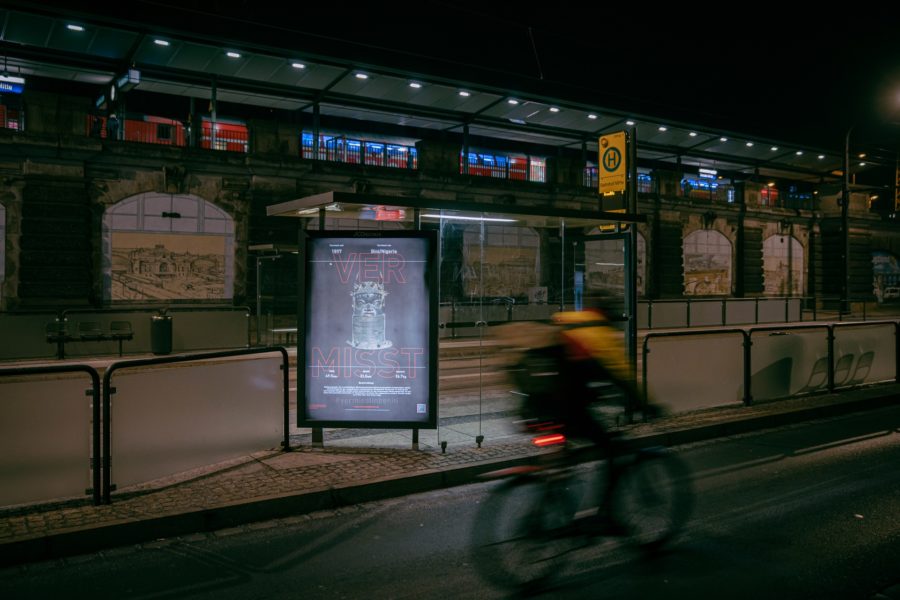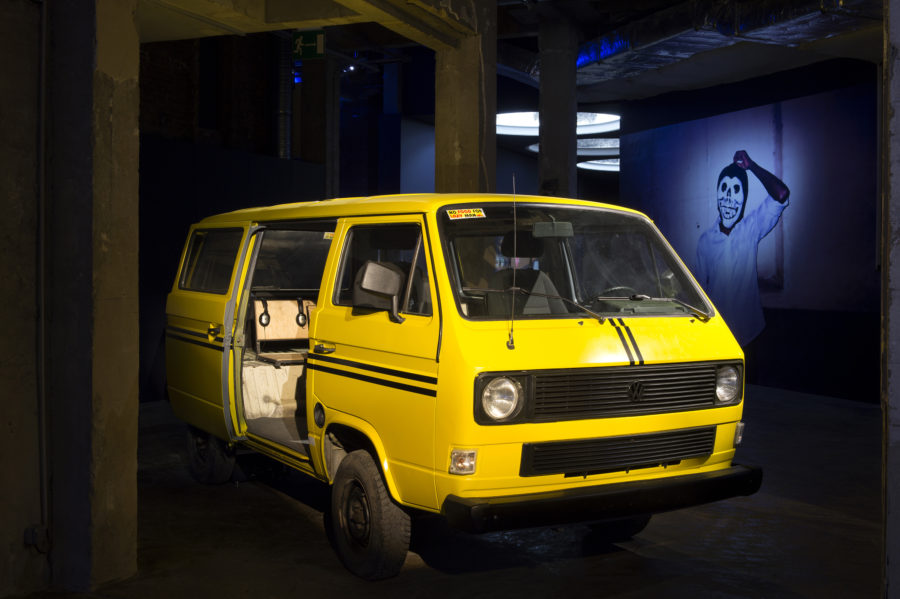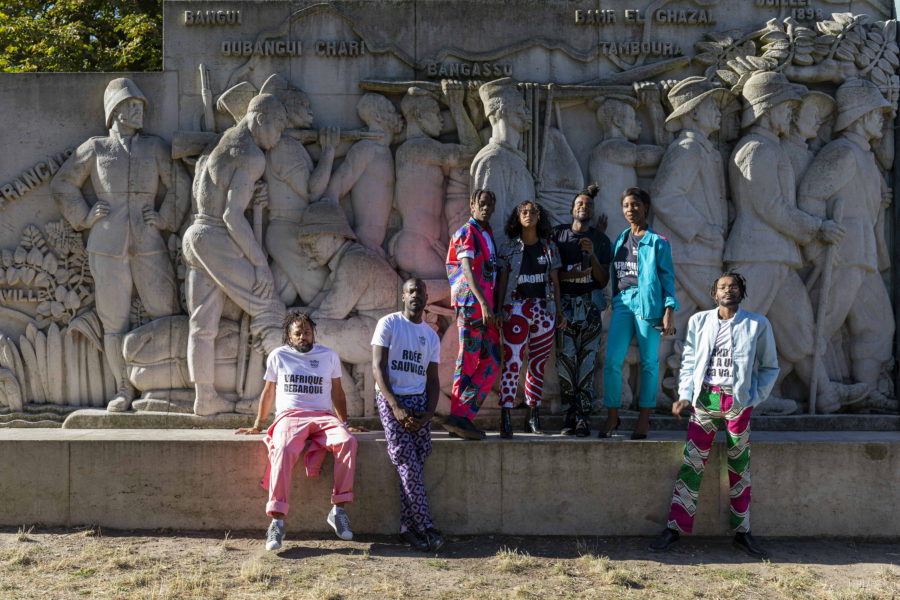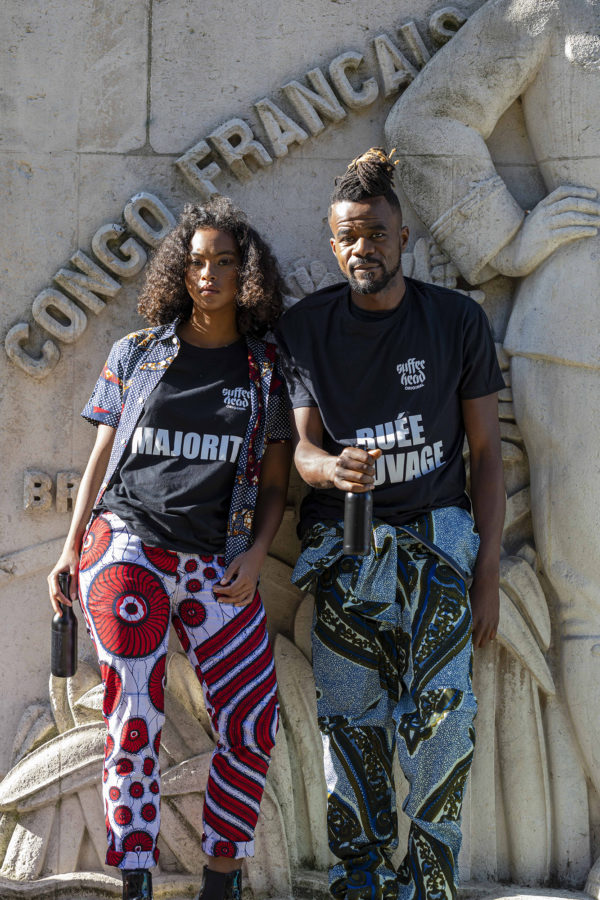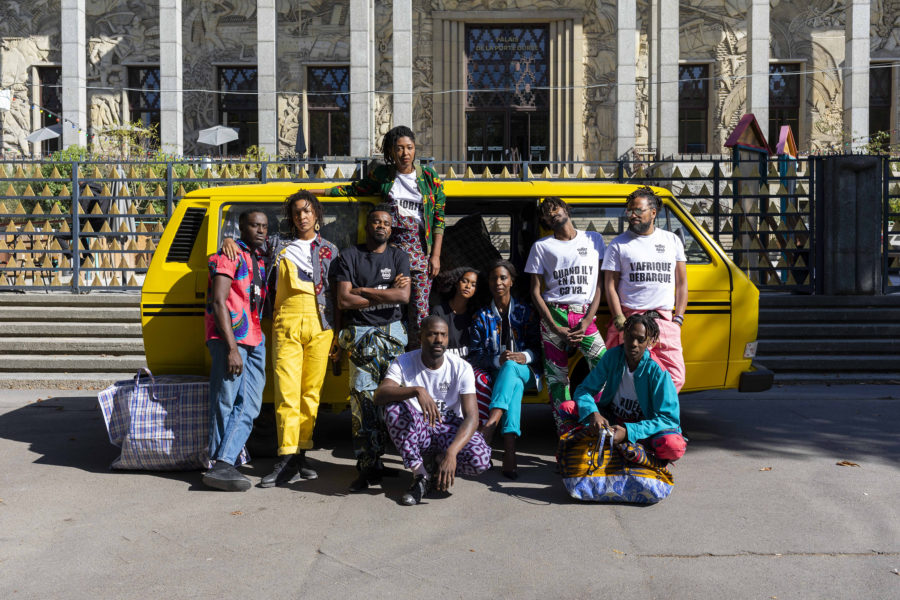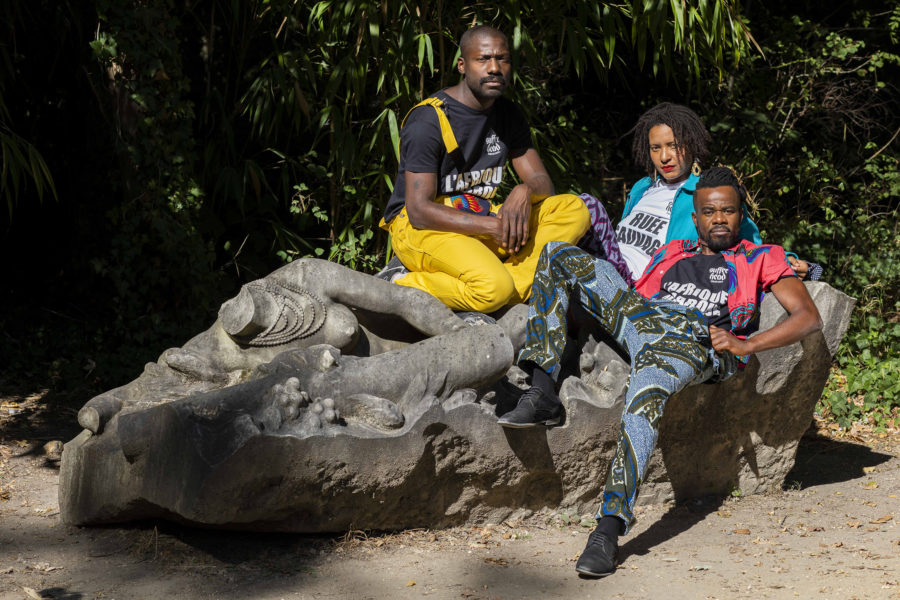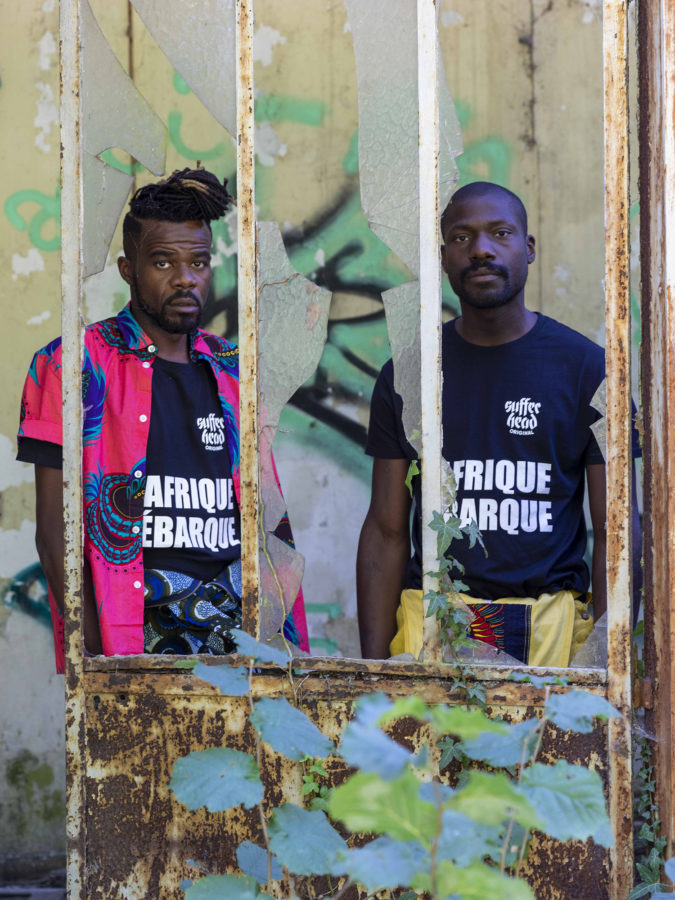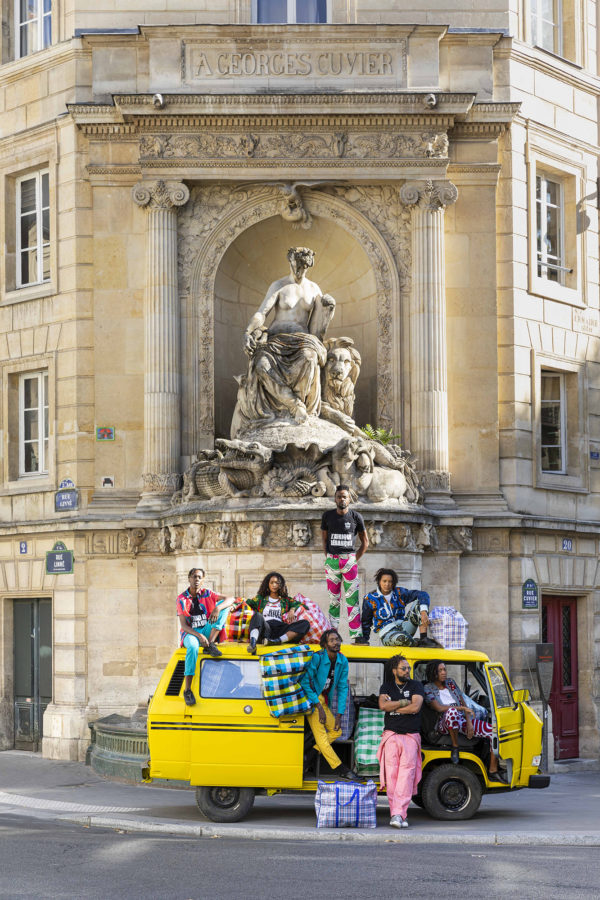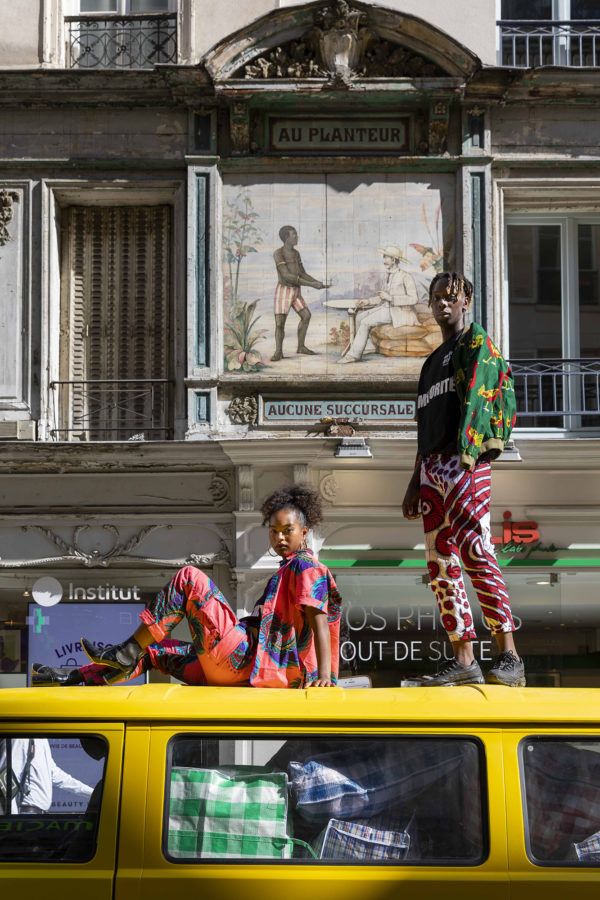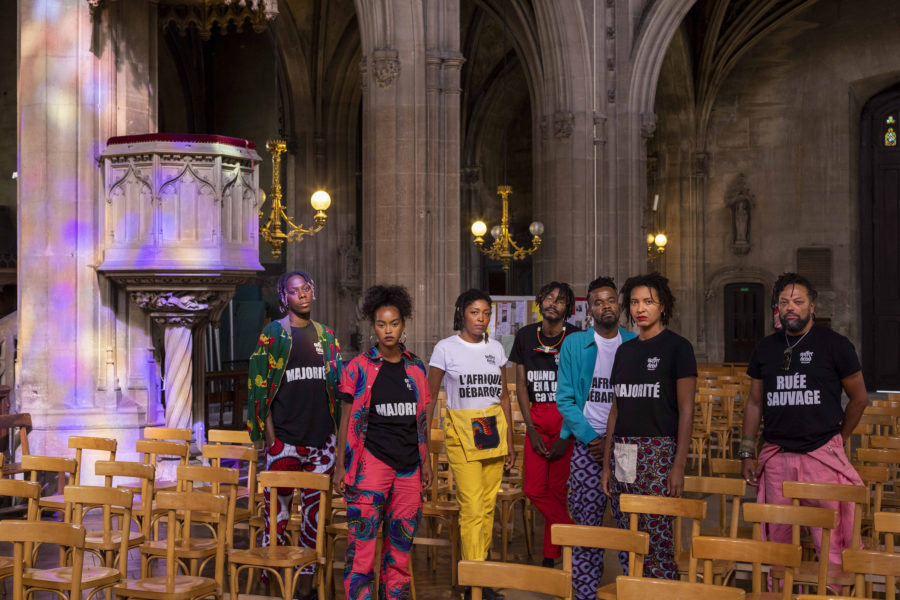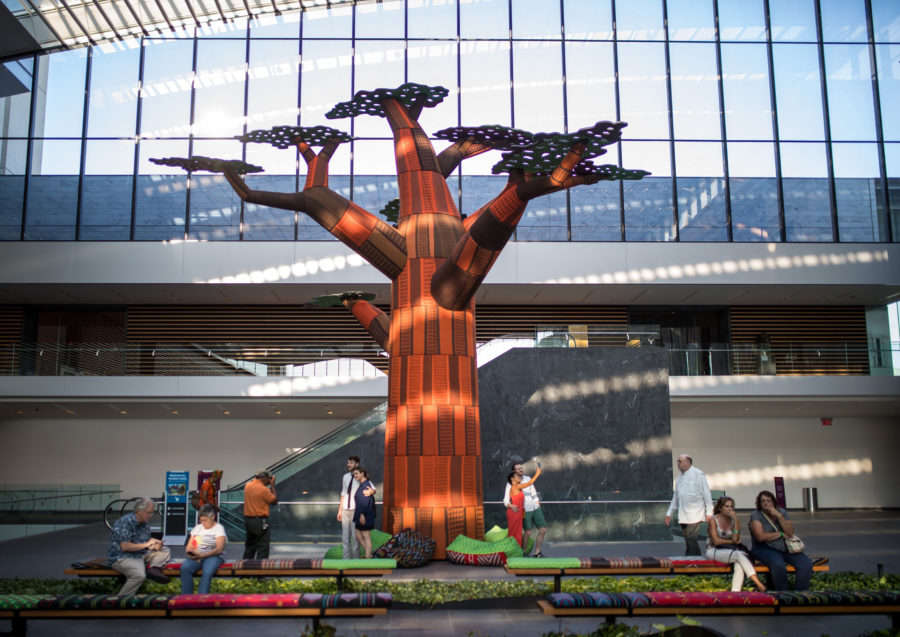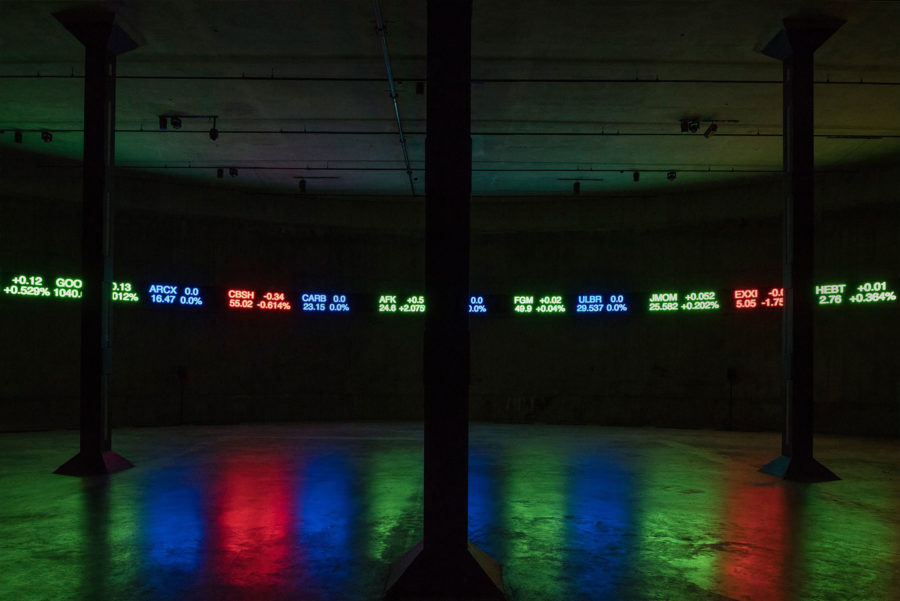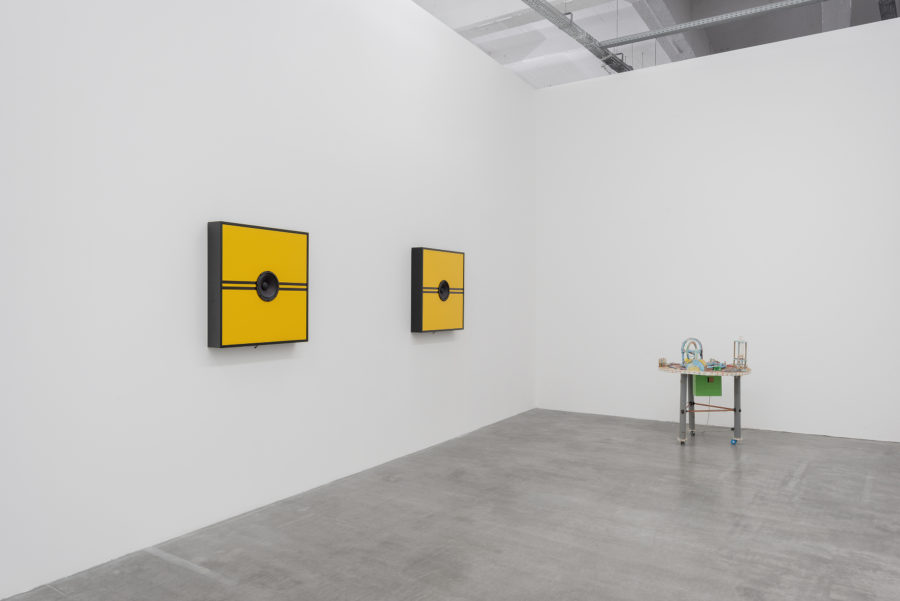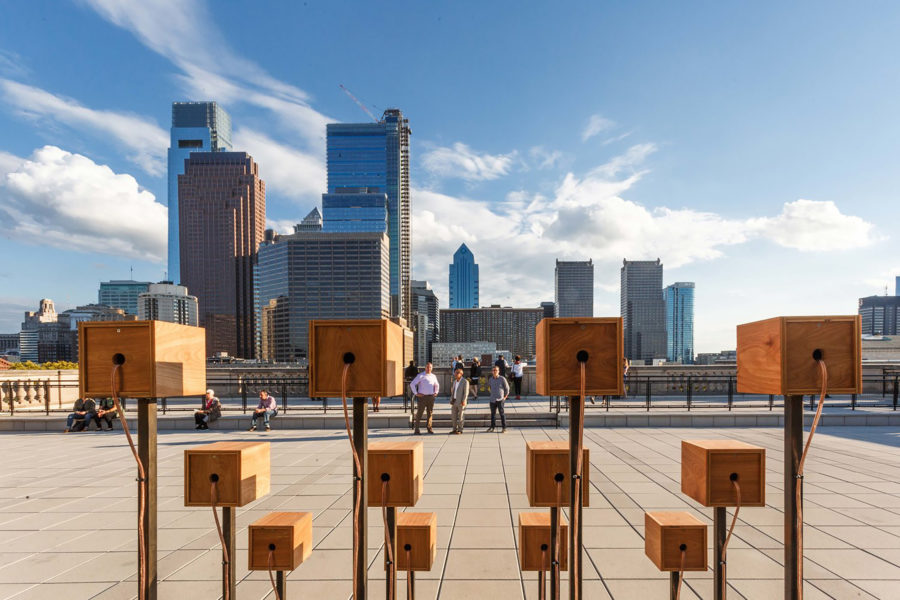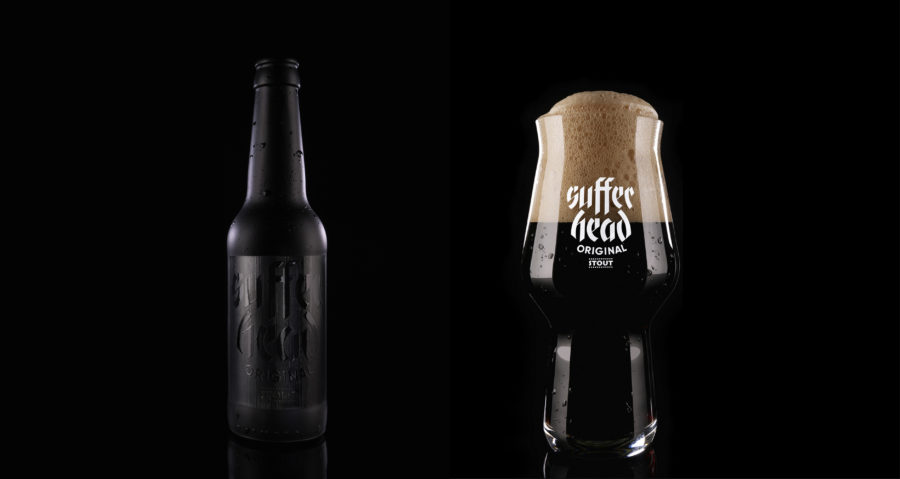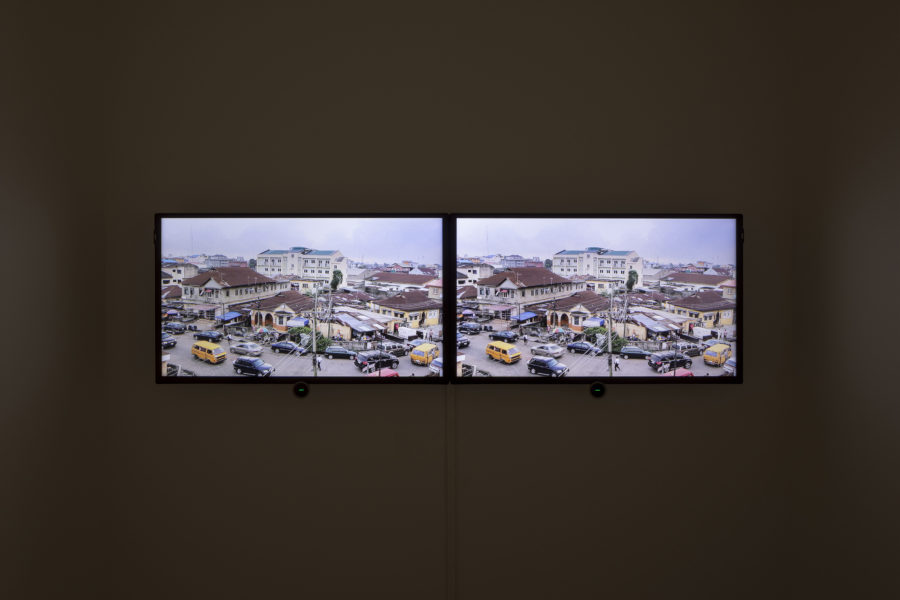Emeka Ogboh

















Archival pigment print on Hahnemühle Photo Rag ; 100 x 150 cm
Edition of 5 + 1 AP
Archival pigment print on Hahnemühle Photo Rag ; 100 x 150 cm
Edition of 5 + 1 AP
Archival pigment print on Hahnemühle Photo Rag ; 150 x 100 cm
Edition of 5 + 1 AP
Archival pigment print on Hahnemühle Photo Rag ; 150 x 100 cm
Edition of 5 + 1 AP
Archival pigment print on Hahnemühle Photo Rag ; 100 x 150 cm
Edition of 5 + 1 AP
Avec l’aimable autorisation de l’Établissement public du Palais de la Porte Dorée. Albert Laprade, Palais de la Porte Dorée, 1931, © Adagp, Paris, 2019. Jean Prouvé, Grille d’entrée du Palais de la Porte Dorée, 1931, © Adagp, Paris, 2019. Alfred Janniot, Bas-reliefs du Palais de la Porte Dorée, 1931, © Adagp, Paris, 2019
[+]Archival pigment print on Hahnemühle Photo Rag ; 100 x 150 cm
Edition of 5 + 1 AP
Avec l’aimable autorisation de l’Établissement public du Palais de la Porte Dorée. Albert Laprade, Palais de la Porte Dorée, 1931, © Adagp, Paris, 2019. Jean Prouvé, Grille d’entrée du Palais de la Porte Dorée, 1931, © Adagp, Paris, 2019. Alfred Janniot, Bas-reliefs du Palais de la Porte Dorée, 1931, © Adagp, Paris, 2019
[-]Archival pigment print on Hahnemühle Photo Rag ; 100 x 150 cm
Edition of 5 + 1 AP
Archival pigment print on Hahnemühle Photo Rag ; 100 x 150 cm
Edition of 5 + 1 AP
Archival pigment print on Hahnemühle Photo Rag ; 150 x 100 cm
Edition of 5 + 1 AP
Archival pigment print on Hahnemühle Photo Rag ; 150 x 100 cm
Edition of 5 + 1 AP
Archival pigment print on Hahnemühle Photo Rag ; 150 x 100 cm
Edition of 5 + 1 AP
Archival pigment print on Hahnemühle Photo Rag ; 150 x 100 cm
Edition of 5 + 1 AP
Archival pigment print on Hahnemühle Photo Rag ; 150 x 100 cm
Edition of 5 + 1 AP
Archival pigment print on Hahnemühle Photo Rag ; 150 x 100 cm
Edition of 5 + 1 AP
Archival pigment print on Hahnemühle Photo Rag ; 100 x 150 cm
Edition of 5 + 1 AP
Archival pigment print on Hahnemühle Photo Rag ; 100 x 150 cm
Edition of 5 + 1 AP
Installation: twenty-eight photographs ; 40 x 66 cm (each), 525 x 160 cm (ensemble)
Edition of 3 + 1 AP
Exhibition view: Emeka Ogboh: No Condition is Permanent, Galerie Imane Farès, Paris, 2018. Photo © Tadzio
Installation: twenty-eight photographs ; 40 x 66 cm (each), 525 x 160 cm (ensemble)
Edition of 3 + 1 AP
Exhibition view: Emeka Ogboh: No Condition is Permanent, Galerie Imane Farès, Paris, 2018. Photo © Tadzio
Two-channel video installation, colour and sound ; 4 min
Edition of 5 + 1 AP
Exhibition view: Emeka Ogboh: No Condition is Permanent, Galerie Imane Farès, Paris, 2018. Photo © Tadzio
Two-channel video installation, colour and sound ; 4 min
Edition of 5 + 1 AP
Exhibition view: Emeka Ogboh: No Condition is Permanent, Galerie Imane Farès, Paris, 2018. Photo © Tadzio
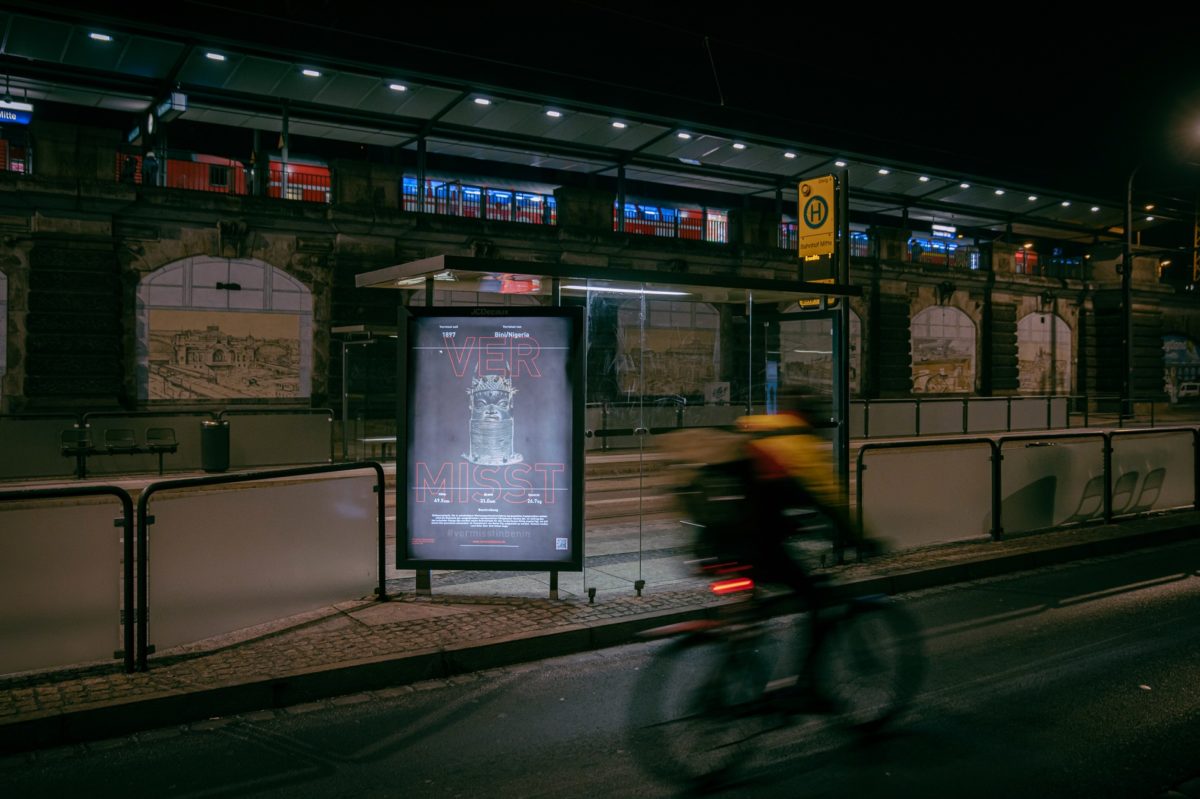

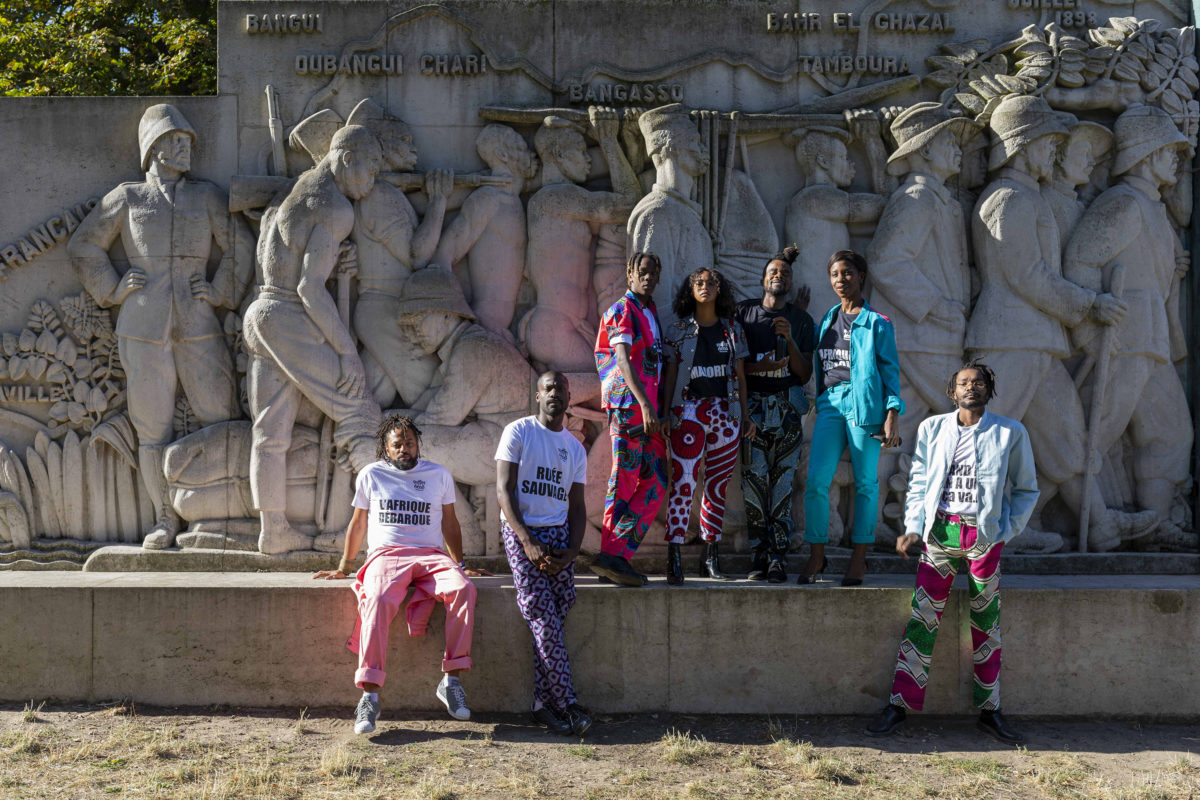
Archival pigment print on Hahnemühle Photo Rag ; 100 x 150 cm
Edition of 5 + 1 AP
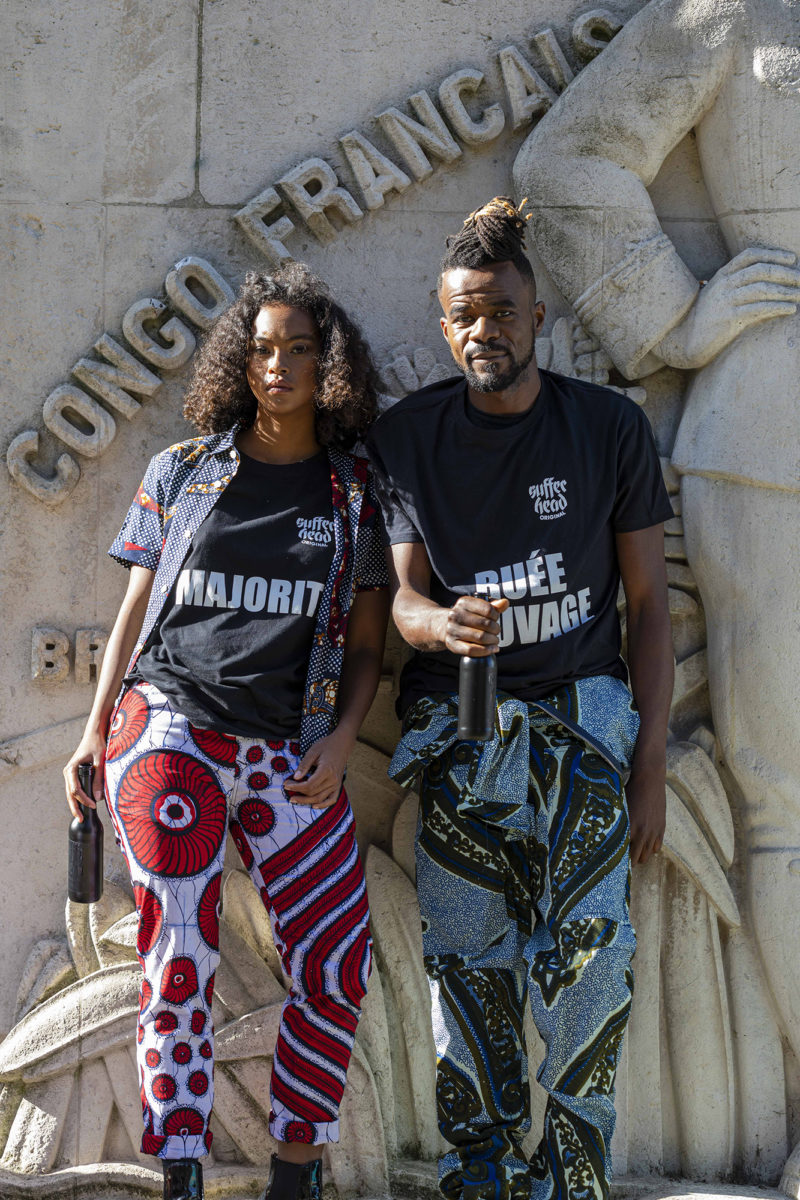
Archival pigment print on Hahnemühle Photo Rag ; 150 x 100 cm
Edition of 5 + 1 AP
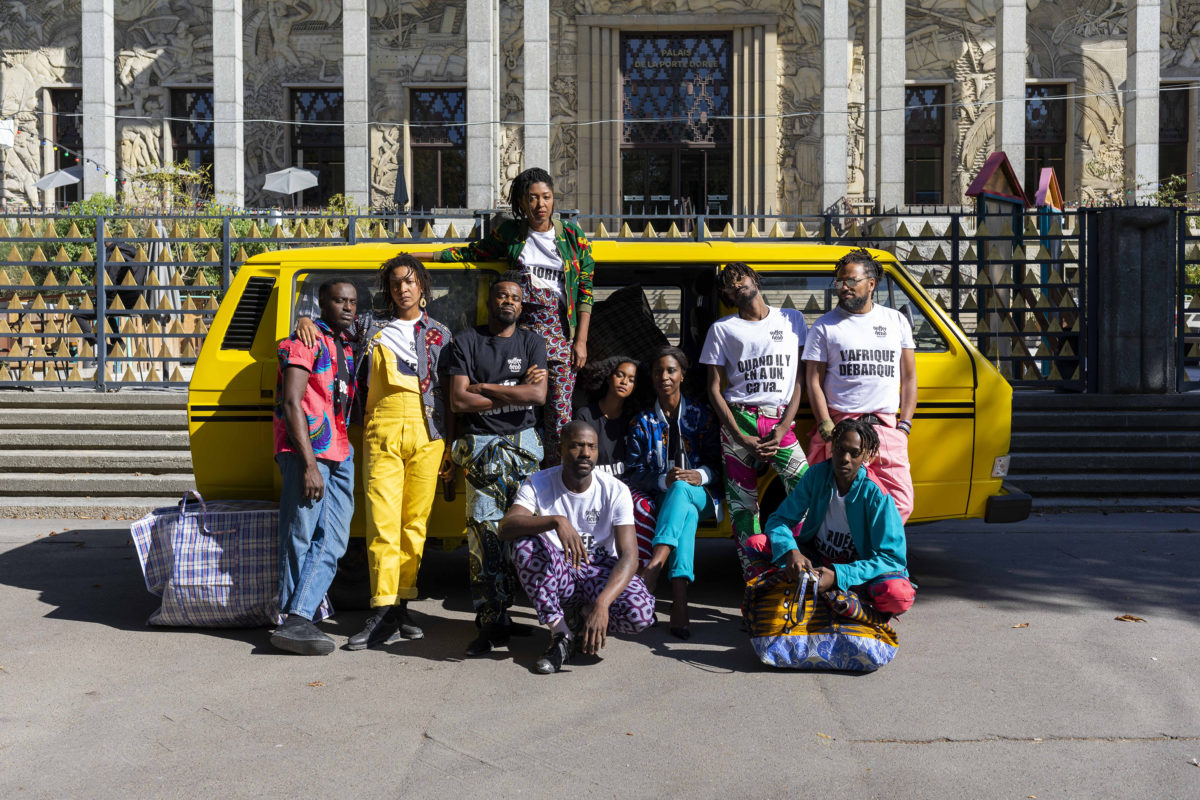
Archival pigment print on Hahnemühle Photo Rag ; 100 x 150 cm
Edition of 5 + 1 AP
Avec l’aimable autorisation de l’Établissement public du Palais de la Porte Dorée. Albert Laprade, Palais de la Porte Dorée, 1931, © Adagp, Paris, 2019. Jean Prouvé, Grille d’entrée du Palais de la Porte Dorée, 1931, © Adagp, Paris, 2019. Alfred Janniot, Bas-reliefs du Palais de la Porte Dorée, 1931, © Adagp, Paris, 2019
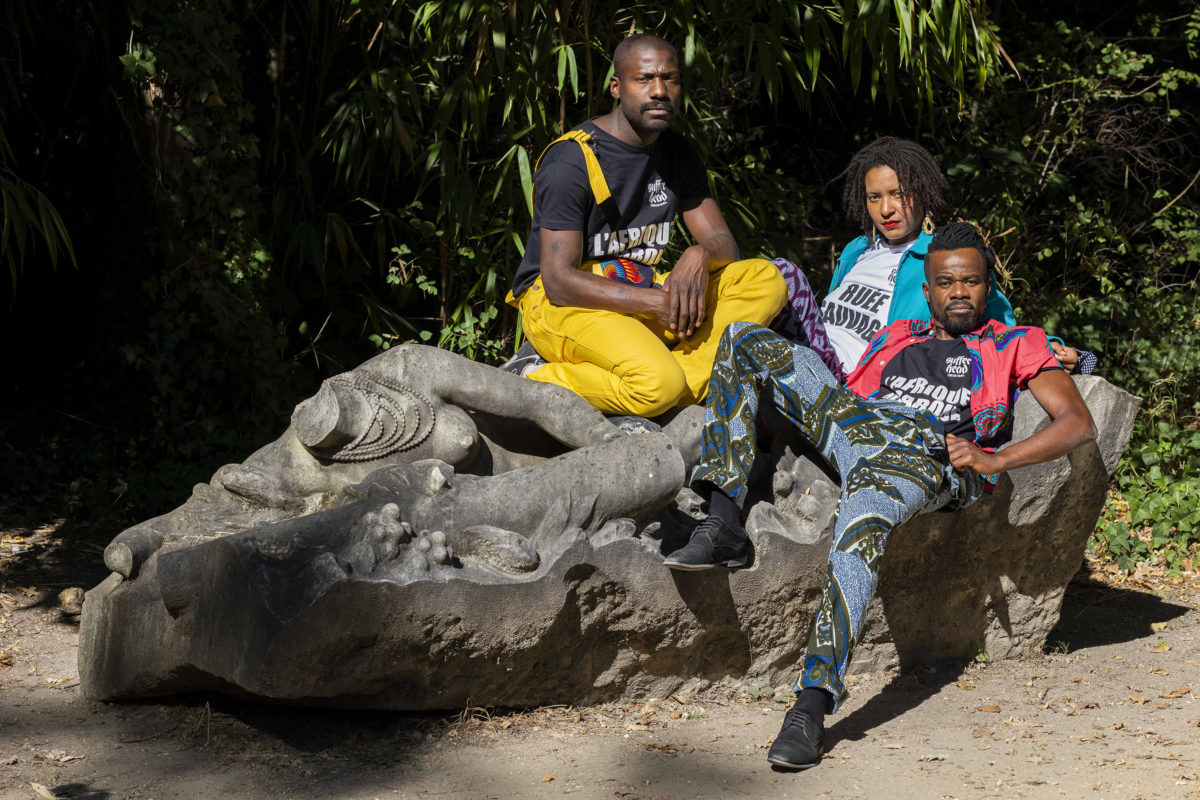
Archival pigment print on Hahnemühle Photo Rag ; 100 x 150 cm
Edition of 5 + 1 AP
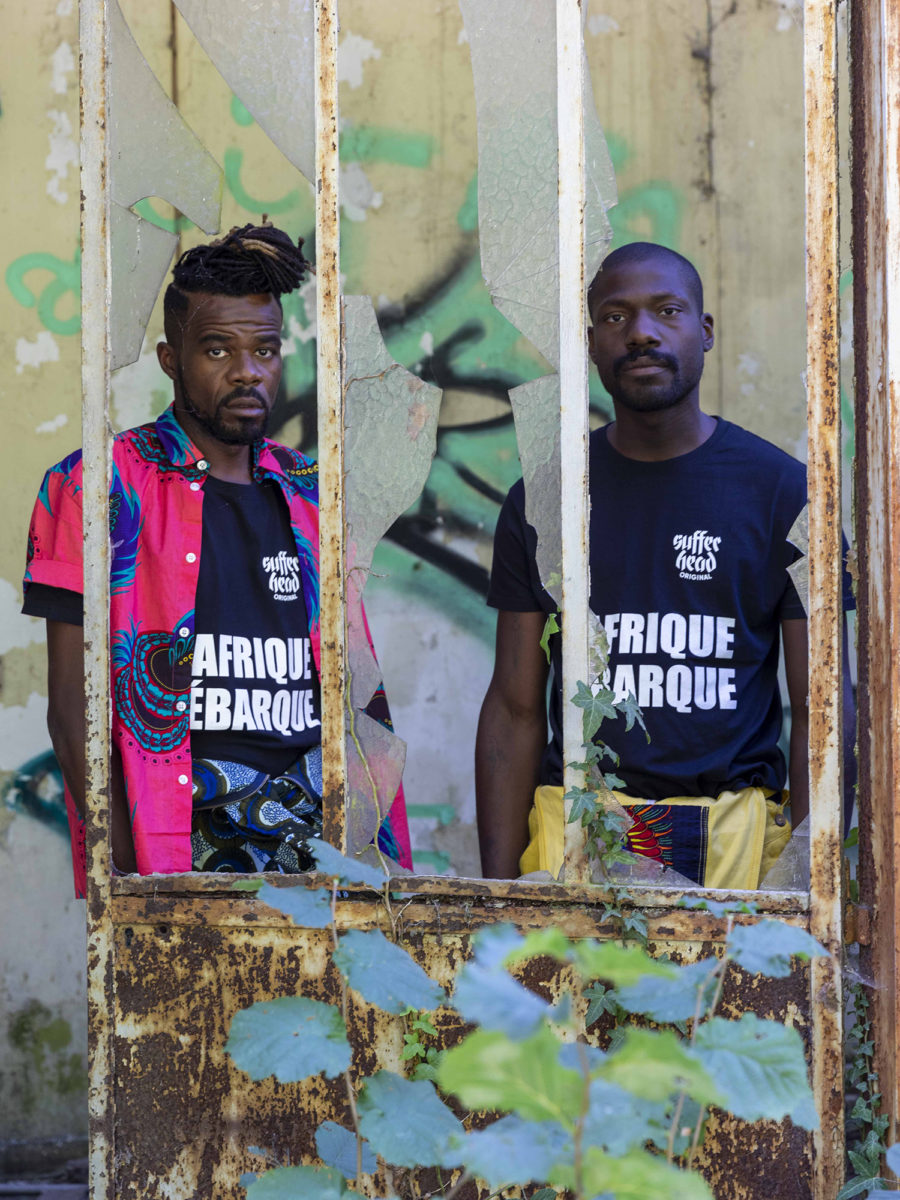
Archival pigment print on Hahnemühle Photo Rag ; 150 x 100 cm
Edition of 5 + 1 AP
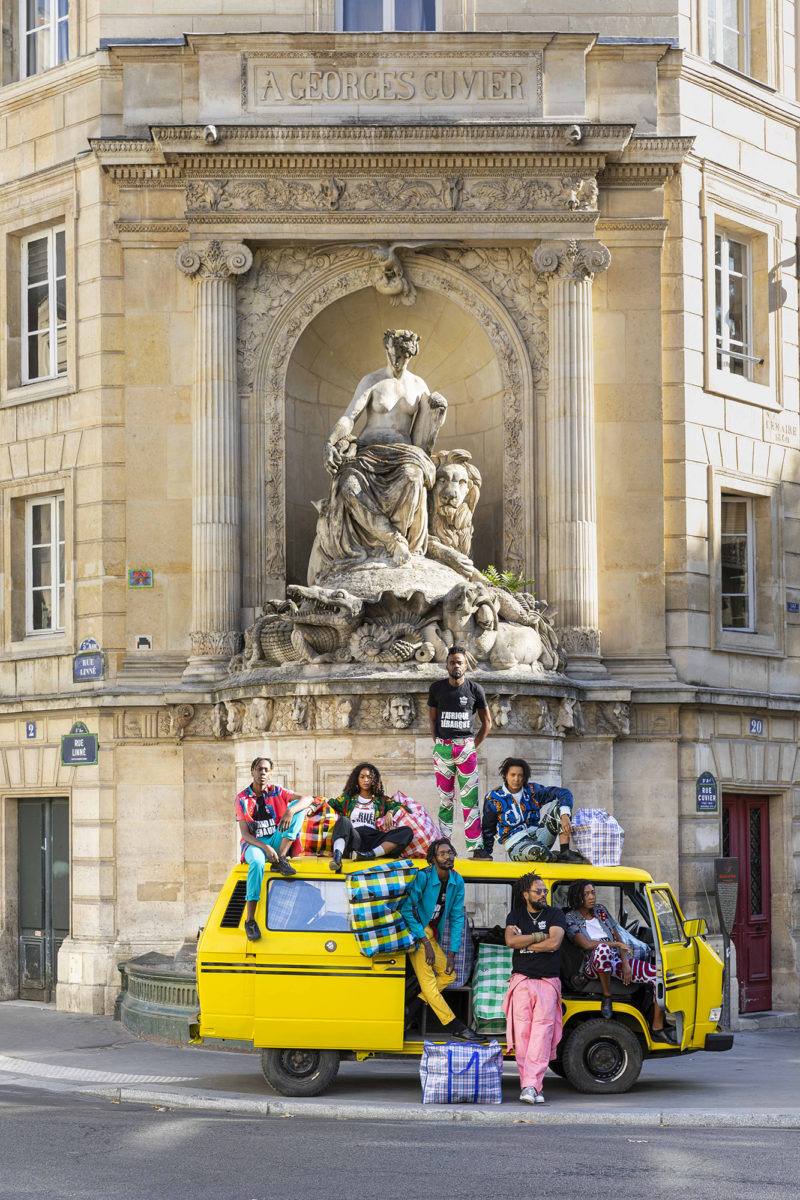
Archival pigment print on Hahnemühle Photo Rag ; 150 x 100 cm
Edition of 5 + 1 AP
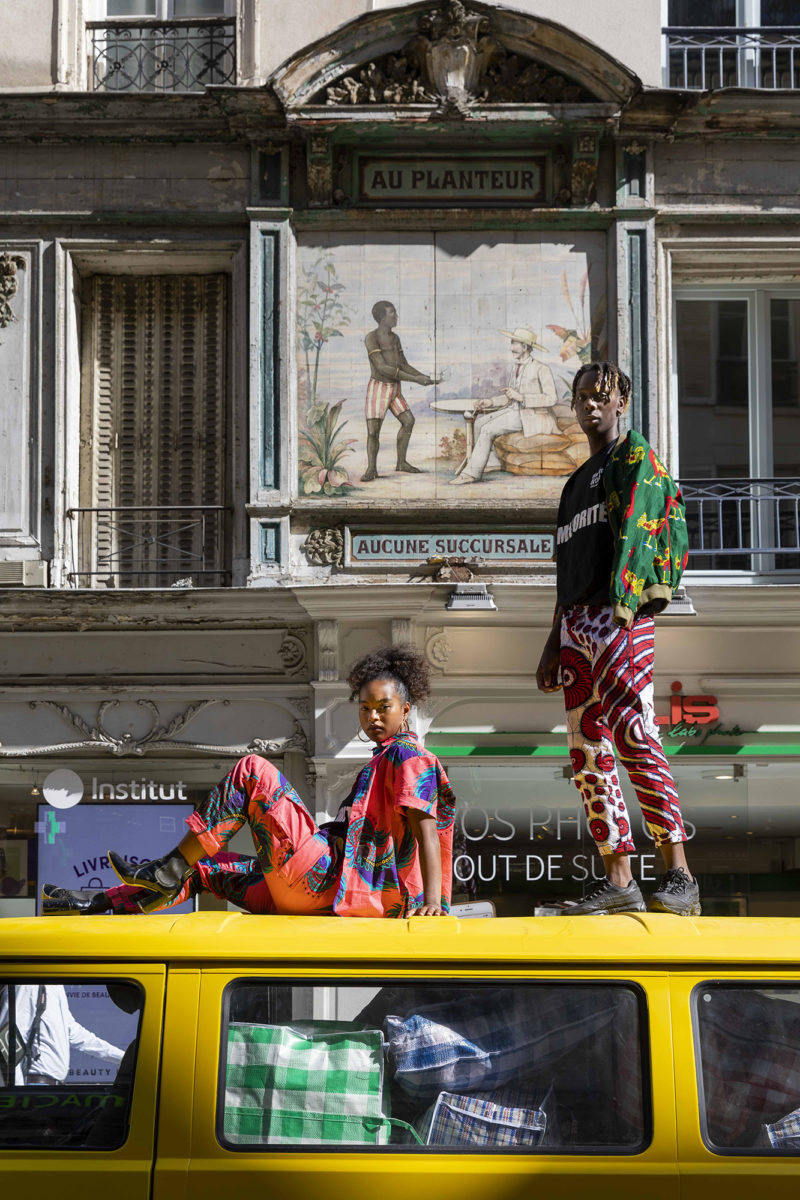
Archival pigment print on Hahnemühle Photo Rag ; 150 x 100 cm
Edition of 5 + 1 AP
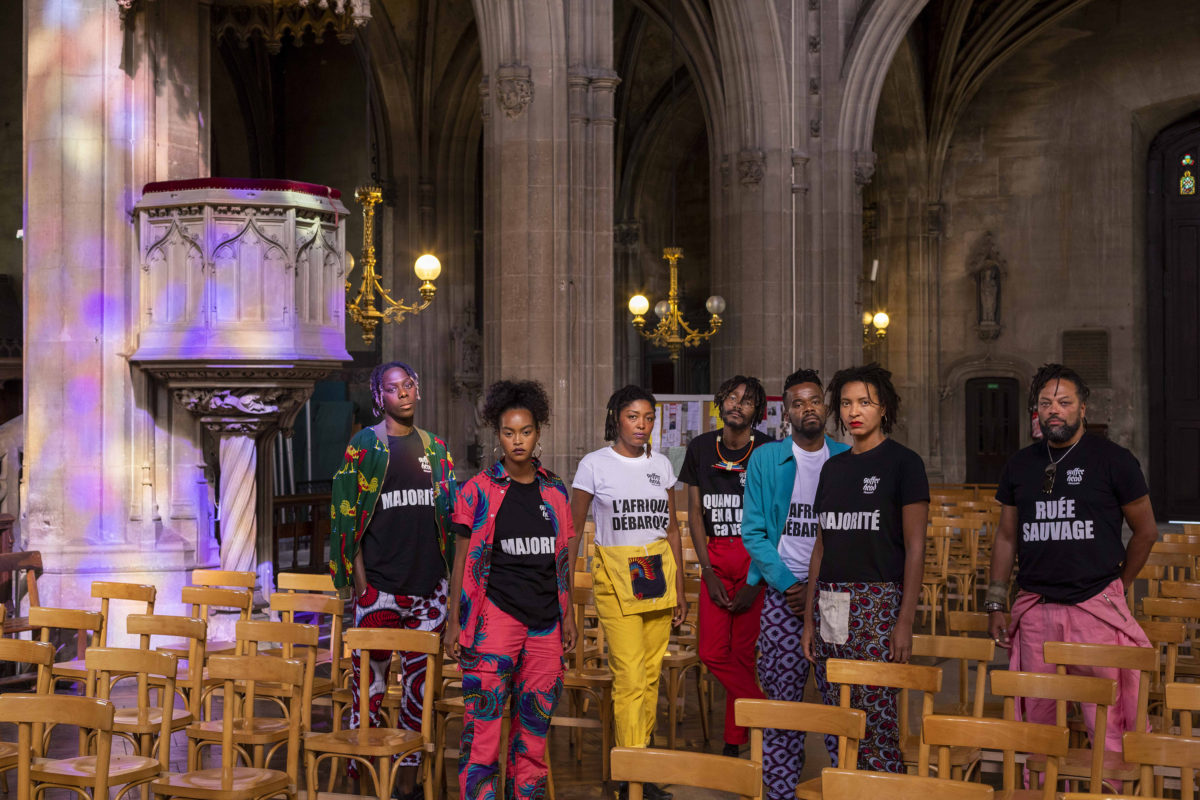
Archival pigment print on Hahnemühle Photo Rag ; 100 x 150 cm
Edition of 5 + 1 AP
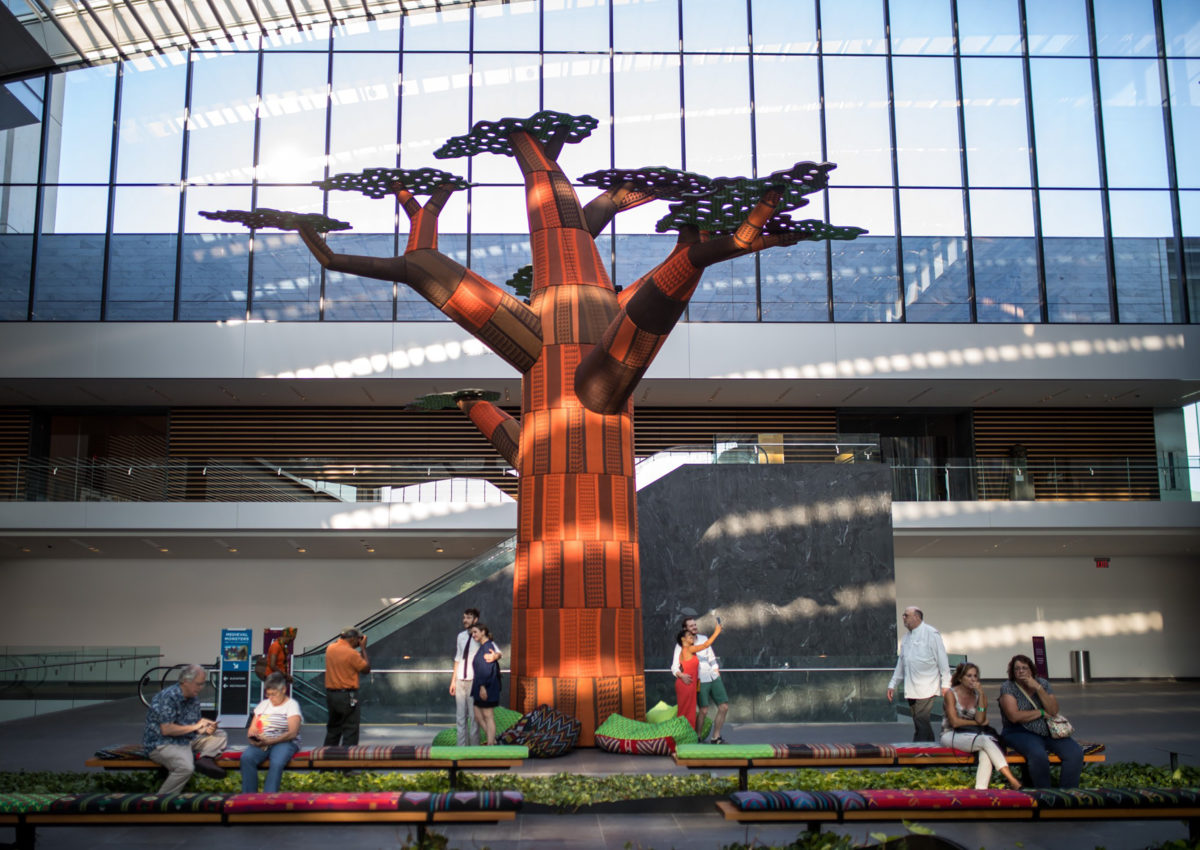

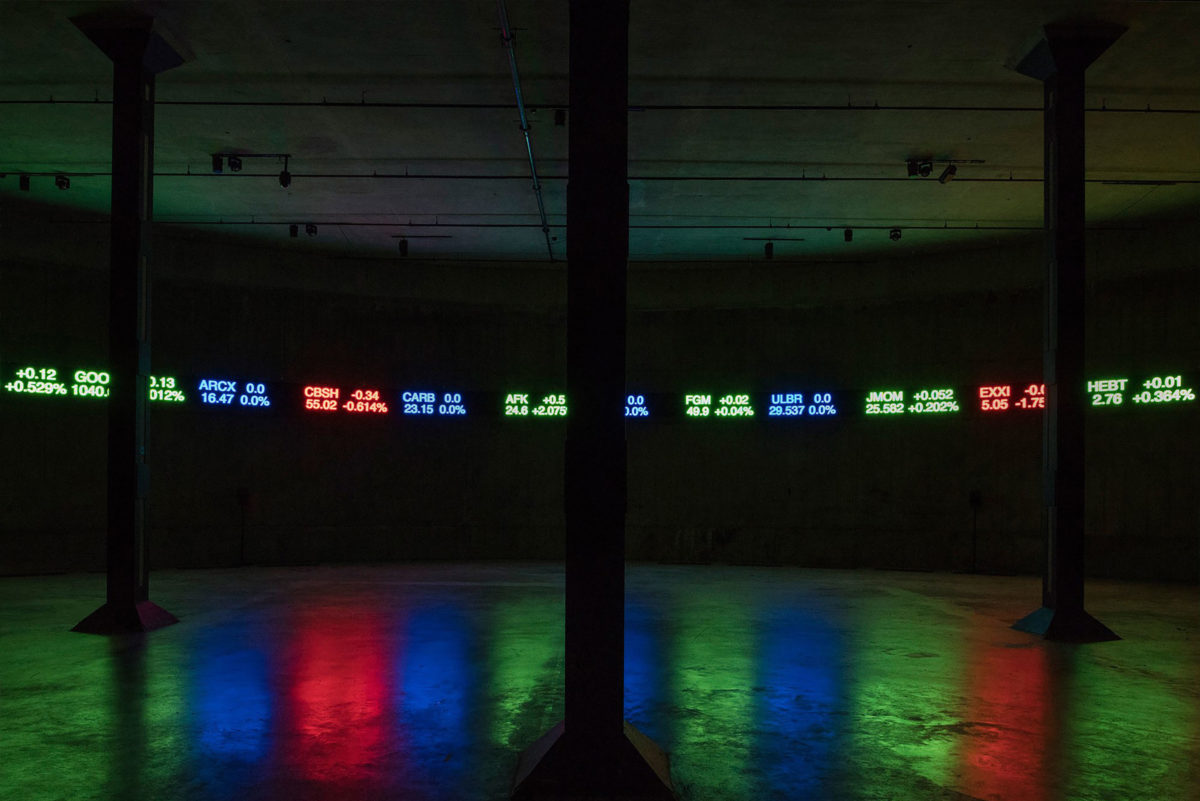

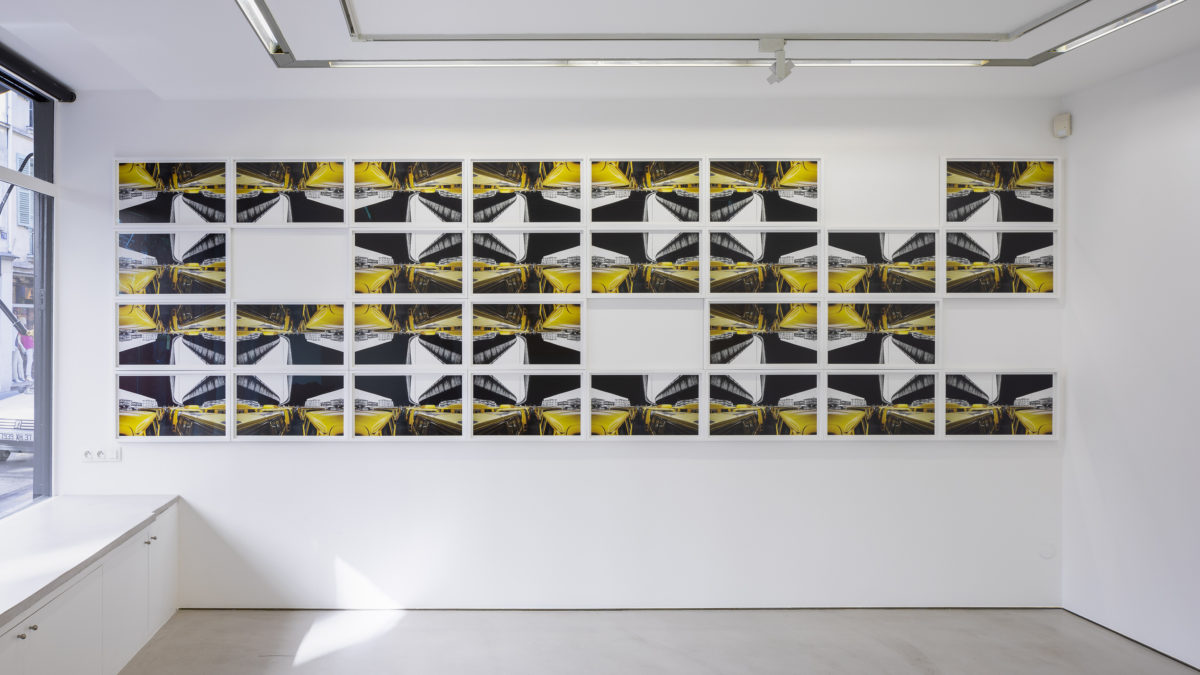
Installation: twenty-eight photographs ; 40 x 66 cm (each), 525 x 160 cm (ensemble)
Edition of 3 + 1 AP
Exhibition view: Emeka Ogboh: No Condition is Permanent, Galerie Imane Farès, Paris, 2018. Photo © Tadzio
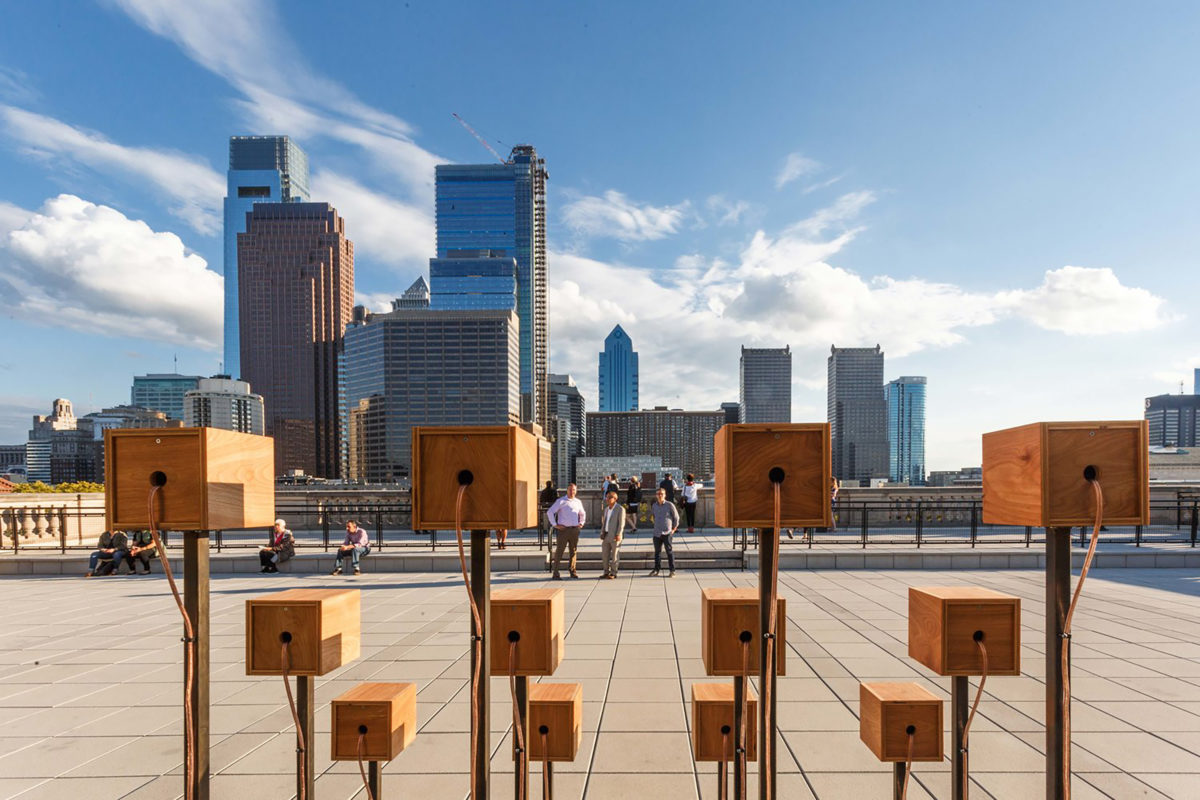
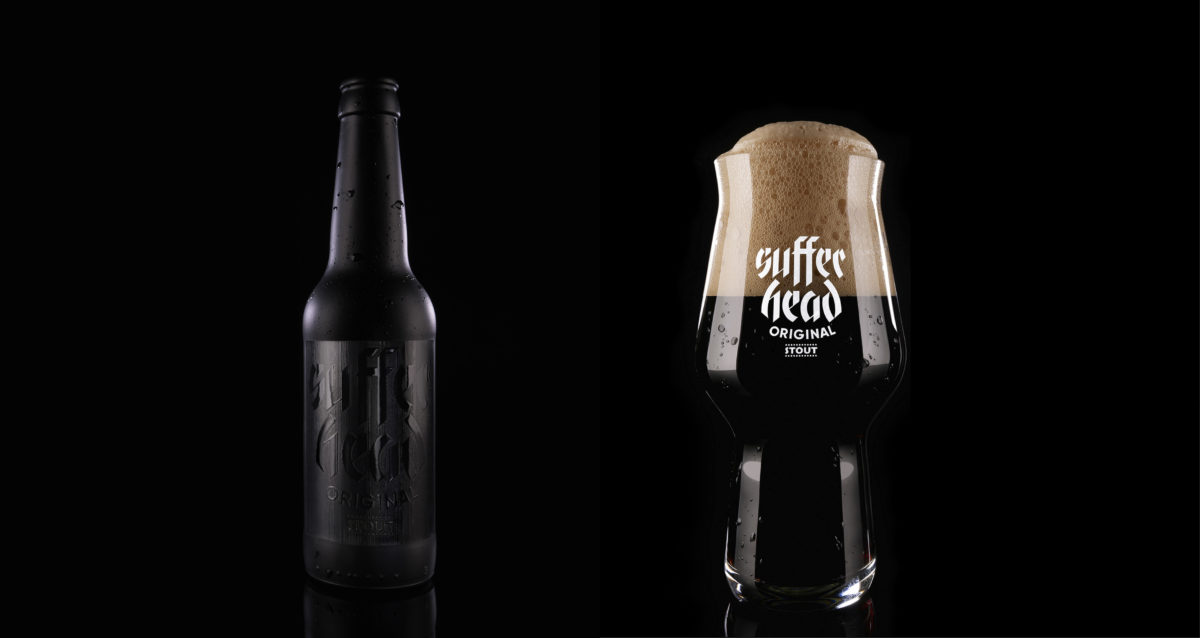
Two-channel video installation, colour and sound ; 4 min
Edition of 5 + 1 AP
Exhibition view: Emeka Ogboh: No Condition is Permanent, Galerie Imane Farès, Paris, 2018. Photo © Tadzio
Public intervention, posters displayed in the city of Dresden
To learn more about the project: http://www.vermisstinbenin.de
Posters © Emeka Ogboh
Photos © SKD, Foto: Oliver Killig
Vermisst in Benin is an artistic intervention that seeks to accelerate and actualize the narrative around the reparation of the Benin artefacts currently in possession of the Museum für Völkerkunde Dresden. The reparation dialogue to date has been ineffective in returning the artifacts to their original home of Benin, Nigeria. I created the “Vermisst in Benin” intervention out of a sense of impatience and necessity, aiming to frame the stagnant and abstract discourse surrounding colonial reparations with the urgency and gravity of a public service announcement.
Taking to the streets of Dresden with posters declaring “Missing Benin Bronzes”, I hope to demystify what has become an elitist dialogue confined to the museum and arts sector. In moving into the public domain with the instantly recognizable format of a missing poster, I hope to reclaim this issue as a postcolonial and societal responsibility. No one is exempt from the repercussions of colonialism and as long as issues of agency, ownership and freedom continue to exist, the society must act as a whole to repatriate artifacts that are simply not theirs.
These posters are a call to action, a transparent and clear message that can be understood and digested by all. Missing posters rely upon a missing variable: the missing object itself or the location an object should be returned to, in many ways this intervention highlights the absurdity of why these artifacts still remain in the museum, when their origin and their current location are both public knowledge. In their cooperation with the project, the Museum für Völkerkunde Dresdenopens up the dialogue for a new way forward, one which does not hide or shy away from the clear and damning facts.
“Vermisst in Benin” is a profound approach to a conversation that has simply gone on too long and one which belongs firmly in the public consciousness.
—Emeka Ogboh, 2020
LOS-CDG (Lagos to Paris), 2019
Volkswagen ‘danfo’ bus, four speakers, six headphones, various audiovisual equipment
Variable dimensions, variable duration (looped sound)
Unique
Exhibition views: Prince.sse.s des villes, Palais de Tokyo, Paris, 2019, Photo © Marc Domage
LOS-CDG (Lagos to Paris) is a Lagos soundscapes installation that incorporates the Danfo bus, sounds associated with the Danfo and its bus stations and electroacoustic music composed by the artist. The installation incorporates a 4-channels sound of the Danfo bus conductors calling out Lagos bus routes on the outside of the installation, and a 6-channels immersive headphones installation of different sounds from Danfo bus stations and electronic music inpired by Lagos soundscapes.
Lagos, Nigeria is impossible to imagine without one of its main avatars, the ‘Danfo’: old sixteen to eighteen seater Volkswagen transporter, kombi or vanagon mini-buses, compact in size, repurposed and painted cadmium yellow with two black stripes. Danfos connect the dots across the map of a megacity that seems to move en-masse. First appearing on the scene in Lagos in the 70’s, they are the archetypal means of mass transportation to convey the microcosmic mass of the city from one point to the other. The Danfos’ continued popularity in Lagos results from its affordability and agility to penetrate every nook and cranny of the city, virtually plying all existing bus routes in Lagos. The Danfo bus drives the spirit and soul of the megacity Lagos; its hustle and bustle, the city’s resilience and indomitable spirit, its multi-lingua, culture and ethnicity – the city’s never-say-never attitude. The Danfo bus embodies and expresses ‘Everything Lagos’ as it ferries the city’s populace through its network of roads. It is inevitable that once inside the Danfo you will experience multiple perspectives of Lagos through everything associated with this mode of transport.
A Danfo bus extracted from its context is another yellow bus with two black stripes until you experience its peculiar composition of sounds: vehicle horns, conductors calling out bus routes, mobile music courtesy of the driver, salesmen and women advertising the latest cure-all, passengers trading up-to- the-minute city gossips, hawkers and mini-mercantilism on the move, tribal jibes, dialogues, mobile phone monologues, as well as religious tantrums, all temporarily trapped in this teeming space. This mobile theatre of drama and entertainment is awash with the overall vibes of a city for nearly the entire 24 hours of the day.
Sufferhead Original (Paris Edition) #1 – #8, 2019
Eight archival pigment print on Hahnemühle Photo Rag
100 x 150 cm / 150 x 100 cm
Edition of 5 + 1 AP (each)
With the kind permission of the Établissement public du Palais de la Porte Dorée.
Architecture: Albert Laprade, @ Adagp, Paris, 2019.
Grates: Jean Prouvé, @Adagp, Paris, 2019.
Bas-reliefs of the facade: Alfred Janniot, @ Adagp, Paris, 2019.
Sufferhead Original is a craft beer project inspired by the food tastes and experiences of Africans living in Europe. Through its mix and associated brand image, it makes it possible to explore certain preconceived ideas and a priori assumptions about immigration and integration policies that are generally associated with the destinies of expatriates in Europe and France.
This project was first initiated in Germany for documenta 14 (Kassel) where a first version of this beer was made, a result of mixing Nigerian flavours with traditional German brewing methods – a decision that effectively violated German “purity laws” governing beer production.
Sufferhead Original (Paris Edition) is a project that pursues the artist’s multisensory approach. Emeka Ogboh uses the visual register of commercial and advertising photography to examine the experience of African populations in France. He diverts its visual vocabulary to address the history of African immigration: the ways in which these populations of differents origins have been and still are categorized and caricatured and the sums of clichés and comments that circulate about them are used and diverted to create the advertising for this beer.
For Sufferhead Original‘s promotional advertising campaign, particularly significant places in the colonial history of France and the discriminations against the black minority were chosen as settings: monuments (Palais de la Porte Dorée, Monument à la Mission Marchant, Fontaine Cuvier), ruined sites of colonial exhibitions (the Jardin d’agronomie tropicale), former commercial signs (“Au Planteur”), places related to the political claims expressed by the “undocumented migrants” (‘’sans papiers ‘’) (Saint-Bernard Church).
The t-shirts worn by the campaign’s models are also the result of a long investigation conducted by the artist into French political speeches on the theme of immigration. They come with quotations and slogans from these speeches (« Africa is coming », « When there is one, it’s fine… », « Majority », « Wild Rush »), slightly transformed or simply diverted to change their meaning.
The yellow and black striped “danfo” bus, visible in the photographs, is the archetype of the public transport system from Lagos to Nigeria. Accompanied by various sound compositions, it constitutes an installation in its own right: LOS-CDG (Lagos to Paris), exhibited in 2019 at the Palais de Tokyo.
The title of the work derives from the title of a 1981 song by Nigerian composer, musician and political activist Fela Kuti (Original Suffer Head). This Afrobeat anthem denounces the situation of the masses in Nigeria and the injustices that are taking place there. While the grooves and the regular rhythm and repetitive structure of the song mimic a long revolutionary procession, Fela Kuti lists the problems that afflict the population: lack of water supply, exorbitant cost of living, no health care, double-digit inflation. The key sentence to sum up the song could be: don’t stay passive, defend your rights!
Sufferhead Original (Paris Edition) #1 – #8, 2019
Eight archival pigment print on Hahnemühle Photo Rag
100 x 150 cm / 150 x 100 cm
Edition of 5 + 1 AP (each)
With the kind permission of the Établissement public du Palais de la Porte Dorée.
Architecture: Albert Laprade, @ Adagp, Paris, 2019.
Grates: Jean Prouvé, @Adagp, Paris, 2019.
Bas-reliefs of the facade: Alfred Janniot, @ Adagp, Paris, 2019.
Sufferhead Original is a craft beer project inspired by the food tastes and experiences of Africans living in Europe. Through its mix and associated brand image, it makes it possible to explore certain preconceived ideas and a priori assumptions about immigration and integration policies that are generally associated with the destinies of expatriates in Europe and France.
This project was first initiated in Germany for documenta 14 (Kassel) where a first version of this beer was made, a result of mixing Nigerian flavours with traditional German brewing methods – a decision that effectively violated German “purity laws” governing beer production.
Sufferhead Original (Paris Edition) is a project that pursues the artist’s multisensory approach. Emeka Ogboh uses the visual register of commercial and advertising photography to examine the experience of African populations in France. He diverts its visual vocabulary to address the history of African immigration: the ways in which these populations of differents origins have been and still are categorized and caricatured and the sums of clichés and comments that circulate about them are used and diverted to create the advertising for this beer.
For Sufferhead Original‘s promotional advertising campaign, particularly significant places in the colonial history of France and the discriminations against the black minority were chosen as settings: monuments (Palais de la Porte Dorée, Monument à la Mission Marchant, Fontaine Cuvier), ruined sites of colonial exhibitions (the Jardin d’agronomie tropicale), former commercial signs (“Au Planteur”), places related to the political claims expressed by the “undocumented migrants” (‘’sans papiers ‘’) (Saint-Bernard Church).
The t-shirts worn by the campaign’s models are also the result of a long investigation conducted by the artist into French political speeches on the theme of immigration. They come with quotations and slogans from these speeches (« Africa is coming », « When there is one, it’s fine… », « Majority », « Wild Rush »), slightly transformed or simply diverted to change their meaning.
The yellow and black striped “danfo” bus, visible in the photographs, is the archetype of the public transport system from Lagos to Nigeria. Accompanied by various sound compositions, it constitutes an installation in its own right: LOS-CDG (Lagos to Paris), exhibited in 2019 at the Palais de Tokyo.
The title of the work derives from the title of a 1981 song by Nigerian composer, musician and political activist Fela Kuti (Original Suffer Head). This Afrobeat anthem denounces the situation of the masses in Nigeria and the injustices that are taking place there. While the grooves and the regular rhythm and repetitive structure of the song mimic a long revolutionary procession, Fela Kuti lists the problems that afflict the population: lack of water supply, exorbitant cost of living, no health care, double-digit inflation. The key sentence to sum up the song could be: don’t stay passive, defend your rights!
Sufferhead Original (Paris Edition) #1 – #8, 2019
Eight archival pigment print on Hahnemühle Photo Rag
100 x 150 cm / 150 x 100 cm
Edition of 5 + 1 AP (each)
With the kind permission of the Établissement public du Palais de la Porte Dorée.
Architecture: Albert Laprade, @ Adagp, Paris, 2019.
Grates: Jean Prouvé, @Adagp, Paris, 2019.
Bas-reliefs of the facade: Alfred Janniot, @ Adagp, Paris, 2019.
Sufferhead Original is a craft beer project inspired by the food tastes and experiences of Africans living in Europe. Through its mix and associated brand image, it makes it possible to explore certain preconceived ideas and a priori assumptions about immigration and integration policies that are generally associated with the destinies of expatriates in Europe and France.
This project was first initiated in Germany for documenta 14 (Kassel) where a first version of this beer was made, a result of mixing Nigerian flavours with traditional German brewing methods – a decision that effectively violated German “purity laws” governing beer production.
Sufferhead Original (Paris Edition) is a project that pursues the artist’s multisensory approach. Emeka Ogboh uses the visual register of commercial and advertising photography to examine the experience of African populations in France. He diverts its visual vocabulary to address the history of African immigration: the ways in which these populations of differents origins have been and still are categorized and caricatured and the sums of clichés and comments that circulate about them are used and diverted to create the advertising for this beer.
For Sufferhead Original‘s promotional advertising campaign, particularly significant places in the colonial history of France and the discriminations against the black minority were chosen as settings: monuments (Palais de la Porte Dorée, Monument à la Mission Marchant, Fontaine Cuvier), ruined sites of colonial exhibitions (the Jardin d’agronomie tropicale), former commercial signs (“Au Planteur”), places related to the political claims expressed by the “undocumented migrants” (‘’sans papiers ‘’) (Saint-Bernard Church).
The t-shirts worn by the campaign’s models are also the result of a long investigation conducted by the artist into French political speeches on the theme of immigration. They come with quotations and slogans from these speeches (« Africa is coming », « When there is one, it’s fine… », « Majority », « Wild Rush »), slightly transformed or simply diverted to change their meaning.
The yellow and black striped “danfo” bus, visible in the photographs, is the archetype of the public transport system from Lagos to Nigeria. Accompanied by various sound compositions, it constitutes an installation in its own right: LOS-CDG (Lagos to Paris), exhibited in 2019 at the Palais de Tokyo.
The title of the work derives from the title of a 1981 song by Nigerian composer, musician and political activist Fela Kuti (Original Suffer Head). This Afrobeat anthem denounces the situation of the masses in Nigeria and the injustices that are taking place there. While the grooves and the regular rhythm and repetitive structure of the song mimic a long revolutionary procession, Fela Kuti lists the problems that afflict the population: lack of water supply, exorbitant cost of living, no health care, double-digit inflation. The key sentence to sum up the song could be: don’t stay passive, defend your rights!
Sufferhead Original (Paris Edition) #1 – #8, 2019
Eight archival pigment print on Hahnemühle Photo Rag
100 x 150 cm / 150 x 100 cm
Edition of 5 + 1 AP (each)
With the kind permission of the Établissement public du Palais de la Porte Dorée.
Architecture: Albert Laprade, @ Adagp, Paris, 2019.
Grates: Jean Prouvé, @Adagp, Paris, 2019.
Bas-reliefs of the facade: Alfred Janniot, @ Adagp, Paris, 2019.
Sufferhead Original is a craft beer project inspired by the food tastes and experiences of Africans living in Europe. Through its mix and associated brand image, it makes it possible to explore certain preconceived ideas and a priori assumptions about immigration and integration policies that are generally associated with the destinies of expatriates in Europe and France.
This project was first initiated in Germany for documenta 14 (Kassel) where a first version of this beer was made, a result of mixing Nigerian flavours with traditional German brewing methods – a decision that effectively violated German “purity laws” governing beer production.
Sufferhead Original (Paris Edition) is a project that pursues the artist’s multisensory approach. Emeka Ogboh uses the visual register of commercial and advertising photography to examine the experience of African populations in France. He diverts its visual vocabulary to address the history of African immigration: the ways in which these populations of differents origins have been and still are categorized and caricatured and the sums of clichés and comments that circulate about them are used and diverted to create the advertising for this beer.
For Sufferhead Original‘s promotional advertising campaign, particularly significant places in the colonial history of France and the discriminations against the black minority were chosen as settings: monuments (Palais de la Porte Dorée, Monument à la Mission Marchant, Fontaine Cuvier), ruined sites of colonial exhibitions (the Jardin d’agronomie tropicale), former commercial signs (“Au Planteur”), places related to the political claims expressed by the “undocumented migrants” (‘’sans papiers ‘’) (Saint-Bernard Church).
The t-shirts worn by the campaign’s models are also the result of a long investigation conducted by the artist into French political speeches on the theme of immigration. They come with quotations and slogans from these speeches (« Africa is coming », « When there is one, it’s fine… », « Majority », « Wild Rush »), slightly transformed or simply diverted to change their meaning.
The yellow and black striped “danfo” bus, visible in the photographs, is the archetype of the public transport system from Lagos to Nigeria. Accompanied by various sound compositions, it constitutes an installation in its own right: LOS-CDG (Lagos to Paris), exhibited in 2019 at the Palais de Tokyo.
The title of the work derives from the title of a 1981 song by Nigerian composer, musician and political activist Fela Kuti (Original Suffer Head). This Afrobeat anthem denounces the situation of the masses in Nigeria and the injustices that are taking place there. While the grooves and the regular rhythm and repetitive structure of the song mimic a long revolutionary procession, Fela Kuti lists the problems that afflict the population: lack of water supply, exorbitant cost of living, no health care, double-digit inflation. The key sentence to sum up the song could be: don’t stay passive, defend your rights!
Sufferhead Original (Paris Edition) #1 – #8, 2019
Eight archival pigment print on Hahnemühle Photo Rag
100 x 150 cm / 150 x 100 cm
Edition of 5 + 1 AP (each)
With the kind permission of the Établissement public du Palais de la Porte Dorée.
Architecture: Albert Laprade, @ Adagp, Paris, 2019.
Grates: Jean Prouvé, @Adagp, Paris, 2019.
Bas-reliefs of the facade: Alfred Janniot, @ Adagp, Paris, 2019.
Sufferhead Original is a craft beer project inspired by the food tastes and experiences of Africans living in Europe. Through its mix and associated brand image, it makes it possible to explore certain preconceived ideas and a priori assumptions about immigration and integration policies that are generally associated with the destinies of expatriates in Europe and France.
This project was first initiated in Germany for documenta 14 (Kassel) where a first version of this beer was made, a result of mixing Nigerian flavours with traditional German brewing methods – a decision that effectively violated German “purity laws” governing beer production.
Sufferhead Original (Paris Edition) is a project that pursues the artist’s multisensory approach. Emeka Ogboh uses the visual register of commercial and advertising photography to examine the experience of African populations in France. He diverts its visual vocabulary to address the history of African immigration: the ways in which these populations of differents origins have been and still are categorized and caricatured and the sums of clichés and comments that circulate about them are used and diverted to create the advertising for this beer.
For Sufferhead Original‘s promotional advertising campaign, particularly significant places in the colonial history of France and the discriminations against the black minority were chosen as settings: monuments (Palais de la Porte Dorée, Monument à la Mission Marchant, Fontaine Cuvier), ruined sites of colonial exhibitions (the Jardin d’agronomie tropicale), former commercial signs (“Au Planteur”), places related to the political claims expressed by the “undocumented migrants” (‘’sans papiers ‘’) (Saint-Bernard Church).
The t-shirts worn by the campaign’s models are also the result of a long investigation conducted by the artist into French political speeches on the theme of immigration. They come with quotations and slogans from these speeches (« Africa is coming », « When there is one, it’s fine… », « Majority », « Wild Rush »), slightly transformed or simply diverted to change their meaning.
The yellow and black striped “danfo” bus, visible in the photographs, is the archetype of the public transport system from Lagos to Nigeria. Accompanied by various sound compositions, it constitutes an installation in its own right: LOS-CDG (Lagos to Paris), exhibited in 2019 at the Palais de Tokyo.
The title of the work derives from the title of a 1981 song by Nigerian composer, musician and political activist Fela Kuti (Original Suffer Head). This Afrobeat anthem denounces the situation of the masses in Nigeria and the injustices that are taking place there. While the grooves and the regular rhythm and repetitive structure of the song mimic a long revolutionary procession, Fela Kuti lists the problems that afflict the population: lack of water supply, exorbitant cost of living, no health care, double-digit inflation. The key sentence to sum up the song could be: don’t stay passive, defend your rights!
Sufferhead Original (Paris Edition) #1 – #8, 2019
Eight archival pigment print on Hahnemühle Photo Rag
100 x 150 cm / 150 x 100 cm
Edition of 5 + 1 AP (each)
With the kind permission of the Établissement public du Palais de la Porte Dorée.
Architecture: Albert Laprade, @ Adagp, Paris, 2019.
Grates: Jean Prouvé, @Adagp, Paris, 2019.
Bas-reliefs of the facade: Alfred Janniot, @ Adagp, Paris, 2019.
Sufferhead Original is a craft beer project inspired by the food tastes and experiences of Africans living in Europe. Through its mix and associated brand image, it makes it possible to explore certain preconceived ideas and a priori assumptions about immigration and integration policies that are generally associated with the destinies of expatriates in Europe and France.
This project was first initiated in Germany for documenta 14 (Kassel) where a first version of this beer was made, a result of mixing Nigerian flavours with traditional German brewing methods – a decision that effectively violated German “purity laws” governing beer production.
Sufferhead Original (Paris Edition) is a project that pursues the artist’s multisensory approach. Emeka Ogboh uses the visual register of commercial and advertising photography to examine the experience of African populations in France. He diverts its visual vocabulary to address the history of African immigration: the ways in which these populations of differents origins have been and still are categorized and caricatured and the sums of clichés and comments that circulate about them are used and diverted to create the advertising for this beer.
For Sufferhead Original‘s promotional advertising campaign, particularly significant places in the colonial history of France and the discriminations against the black minority were chosen as settings: monuments (Palais de la Porte Dorée, Monument à la Mission Marchant, Fontaine Cuvier), ruined sites of colonial exhibitions (the Jardin d’agronomie tropicale), former commercial signs (“Au Planteur”), places related to the political claims expressed by the “undocumented migrants” (‘’sans papiers ‘’) (Saint-Bernard Church).
The t-shirts worn by the campaign’s models are also the result of a long investigation conducted by the artist into French political speeches on the theme of immigration. They come with quotations and slogans from these speeches (« Africa is coming », « When there is one, it’s fine… », « Majority », « Wild Rush »), slightly transformed or simply diverted to change their meaning.
The yellow and black striped “danfo” bus, visible in the photographs, is the archetype of the public transport system from Lagos to Nigeria. Accompanied by various sound compositions, it constitutes an installation in its own right: LOS-CDG (Lagos to Paris), exhibited in 2019 at the Palais de Tokyo.
The title of the work derives from the title of a 1981 song by Nigerian composer, musician and political activist Fela Kuti (Original Suffer Head). This Afrobeat anthem denounces the situation of the masses in Nigeria and the injustices that are taking place there. While the grooves and the regular rhythm and repetitive structure of the song mimic a long revolutionary procession, Fela Kuti lists the problems that afflict the population: lack of water supply, exorbitant cost of living, no health care, double-digit inflation. The key sentence to sum up the song could be: don’t stay passive, defend your rights!
Sufferhead Original (Paris Edition) #1 – #8, 2019
Eight archival pigment print on Hahnemühle Photo Rag
100 x 150 cm / 150 x 100 cm
Edition of 5 + 1 AP (each)
With the kind permission of the Établissement public du Palais de la Porte Dorée.
Architecture: Albert Laprade, @ Adagp, Paris, 2019.
Grates: Jean Prouvé, @Adagp, Paris, 2019.
Bas-reliefs of the facade: Alfred Janniot, @ Adagp, Paris, 2019.
Sufferhead Original is a craft beer project inspired by the food tastes and experiences of Africans living in Europe. Through its mix and associated brand image, it makes it possible to explore certain preconceived ideas and a priori assumptions about immigration and integration policies that are generally associated with the destinies of expatriates in Europe and France.
This project was first initiated in Germany for documenta 14 (Kassel) where a first version of this beer was made, a result of mixing Nigerian flavours with traditional German brewing methods – a decision that effectively violated German “purity laws” governing beer production.
Sufferhead Original (Paris Edition) is a project that pursues the artist’s multisensory approach. Emeka Ogboh uses the visual register of commercial and advertising photography to examine the experience of African populations in France. He diverts its visual vocabulary to address the history of African immigration: the ways in which these populations of differents origins have been and still are categorized and caricatured and the sums of clichés and comments that circulate about them are used and diverted to create the advertising for this beer.
For Sufferhead Original‘s promotional advertising campaign, particularly significant places in the colonial history of France and the discriminations against the black minority were chosen as settings: monuments (Palais de la Porte Dorée, Monument à la Mission Marchant, Fontaine Cuvier), ruined sites of colonial exhibitions (the Jardin d’agronomie tropicale), former commercial signs (“Au Planteur”), places related to the political claims expressed by the “undocumented migrants” (‘’sans papiers ‘’) (Saint-Bernard Church).
The t-shirts worn by the campaign’s models are also the result of a long investigation conducted by the artist into French political speeches on the theme of immigration. They come with quotations and slogans from these speeches (« Africa is coming », « When there is one, it’s fine… », « Majority », « Wild Rush »), slightly transformed or simply diverted to change their meaning.
The yellow and black striped “danfo” bus, visible in the photographs, is the archetype of the public transport system from Lagos to Nigeria. Accompanied by various sound compositions, it constitutes an installation in its own right: LOS-CDG (Lagos to Paris), exhibited in 2019 at the Palais de Tokyo.
The title of the work derives from the title of a 1981 song by Nigerian composer, musician and political activist Fela Kuti (Original Suffer Head). This Afrobeat anthem denounces the situation of the masses in Nigeria and the injustices that are taking place there. While the grooves and the regular rhythm and repetitive structure of the song mimic a long revolutionary procession, Fela Kuti lists the problems that afflict the population: lack of water supply, exorbitant cost of living, no health care, double-digit inflation. The key sentence to sum up the song could be: don’t stay passive, defend your rights!
Sufferhead Original (Paris Edition) #1 – #8, 2019
Eight archival pigment print on Hahnemühle Photo Rag
100 x 150 cm / 150 x 100 cm
Edition of 5 + 1 AP (each)
With the kind permission of the Établissement public du Palais de la Porte Dorée.
Architecture: Albert Laprade, @ Adagp, Paris, 2019.
Grates: Jean Prouvé, @Adagp, Paris, 2019.
Bas-reliefs of the facade: Alfred Janniot, @ Adagp, Paris, 2019.
Sufferhead Original is a craft beer project inspired by the food tastes and experiences of Africans living in Europe. Through its mix and associated brand image, it makes it possible to explore certain preconceived ideas and a priori assumptions about immigration and integration policies that are generally associated with the destinies of expatriates in Europe and France.
This project was first initiated in Germany for documenta 14 (Kassel) where a first version of this beer was made, a result of mixing Nigerian flavours with traditional German brewing methods – a decision that effectively violated German “purity laws” governing beer production.
Sufferhead Original (Paris Edition) is a project that pursues the artist’s multisensory approach. Emeka Ogboh uses the visual register of commercial and advertising photography to examine the experience of African populations in France. He diverts its visual vocabulary to address the history of African immigration: the ways in which these populations of differents origins have been and still are categorized and caricatured and the sums of clichés and comments that circulate about them are used and diverted to create the advertising for this beer.
For Sufferhead Original‘s promotional advertising campaign, particularly significant places in the colonial history of France and the discriminations against the black minority were chosen as settings: monuments (Palais de la Porte Dorée, Monument à la Mission Marchant, Fontaine Cuvier), ruined sites of colonial exhibitions (the Jardin d’agronomie tropicale), former commercial signs (“Au Planteur”), places related to the political claims expressed by the “undocumented migrants” (‘’sans papiers ‘’) (Saint-Bernard Church).
The t-shirts worn by the campaign’s models are also the result of a long investigation conducted by the artist into French political speeches on the theme of immigration. They come with quotations and slogans from these speeches (« Africa is coming », « When there is one, it’s fine… », « Majority », « Wild Rush »), slightly transformed or simply diverted to change their meaning.
The yellow and black striped “danfo” bus, visible in the photographs, is the archetype of the public transport system from Lagos to Nigeria. Accompanied by various sound compositions, it constitutes an installation in its own right: LOS-CDG (Lagos to Paris), exhibited in 2019 at the Palais de Tokyo.
The title of the work derives from the title of a 1981 song by Nigerian composer, musician and political activist Fela Kuti (Original Suffer Head). This Afrobeat anthem denounces the situation of the masses in Nigeria and the injustices that are taking place there. While the grooves and the regular rhythm and repetitive structure of the song mimic a long revolutionary procession, Fela Kuti lists the problems that afflict the population: lack of water supply, exorbitant cost of living, no health care, double-digit inflation. The key sentence to sum up the song could be: don’t stay passive, defend your rights!
Sufferhead Original (Paris Edition) #1 – #8, 2019
Eight archival pigment print on Hahnemühle Photo Rag
100 x 150 cm / 150 x 100 cm
Edition of 5 + 1 AP (each)
With the kind permission of the Établissement public du Palais de la Porte Dorée.
Architecture: Albert Laprade, @ Adagp, Paris, 2019.
Grates: Jean Prouvé, @Adagp, Paris, 2019.
Bas-reliefs of the facade: Alfred Janniot, @ Adagp, Paris, 2019.
Sufferhead Original is a craft beer project inspired by the food tastes and experiences of Africans living in Europe. Through its mix and associated brand image, it makes it possible to explore certain preconceived ideas and a priori assumptions about immigration and integration policies that are generally associated with the destinies of expatriates in Europe and France.
This project was first initiated in Germany for documenta 14 (Kassel) where a first version of this beer was made, a result of mixing Nigerian flavours with traditional German brewing methods – a decision that effectively violated German “purity laws” governing beer production.
Sufferhead Original (Paris Edition) is a project that pursues the artist’s multisensory approach. Emeka Ogboh uses the visual register of commercial and advertising photography to examine the experience of African populations in France. He diverts its visual vocabulary to address the history of African immigration: the ways in which these populations of differents origins have been and still are categorized and caricatured and the sums of clichés and comments that circulate about them are used and diverted to create the advertising for this beer.
For Sufferhead Original‘s promotional advertising campaign, particularly significant places in the colonial history of France and the discriminations against the black minority were chosen as settings: monuments (Palais de la Porte Dorée, Monument à la Mission Marchant, Fontaine Cuvier), ruined sites of colonial exhibitions (the Jardin d’agronomie tropicale), former commercial signs (“Au Planteur”), places related to the political claims expressed by the “undocumented migrants” (‘’sans papiers ‘’) (Saint-Bernard Church).
The t-shirts worn by the campaign’s models are also the result of a long investigation conducted by the artist into French political speeches on the theme of immigration. They come with quotations and slogans from these speeches (« Africa is coming », « When there is one, it’s fine… », « Majority », « Wild Rush »), slightly transformed or simply diverted to change their meaning.
The yellow and black striped “danfo” bus, visible in the photographs, is the archetype of the public transport system from Lagos to Nigeria. Accompanied by various sound compositions, it constitutes an installation in its own right: LOS-CDG (Lagos to Paris), exhibited in 2019 at the Palais de Tokyo.
The title of the work derives from the title of a 1981 song by Nigerian composer, musician and political activist Fela Kuti (Original Suffer Head). This Afrobeat anthem denounces the situation of the masses in Nigeria and the injustices that are taking place there. While the grooves and the regular rhythm and repetitive structure of the song mimic a long revolutionary procession, Fela Kuti lists the problems that afflict the population: lack of water supply, exorbitant cost of living, no health care, double-digit inflation. The key sentence to sum up the song could be: don’t stay passive, defend your rights!
Ámà: The Gathering Place, 2019
In-situ installation, mixed media
Variable dimensions
Exhibition views: Cleveland Museum of Art. Photo © Scott Shaw
The first commissioned artwork for the Ames Family Atrium, Ámà: The Gathering Place by Emeka Ogboh (Nigerian, b. 1977) is an installation integrating sound, sculpture, and textiles. As you listen to the music that migrates throughout the atrium, we invite to you to relax and consider your experience of this setting.
The work’s point of departure is the social role of the Cleveland Museum of Art’s atrium, used by visitors as a place for meeting and exchange, eating and drinking, working and relaxing. Ogboh describes the atrium as the “heart and soul of the museum,” and compares it to the ámà—or village square—the central force of Igbo life in southeast Nigeria where he was born. “Both sites,” Ogboh explains, “are contact zones, spaces of gathering and ritual activities in their respective settings.”
Spirit and Matter, 2018
Light and sound installation composed of three photographs printed on stained-glass and mounted on lightboxes, audio
252,2 x 152 cm, duration: 10 min 34 sec
Unique
Exhibition views: Multiple Transmissions: Art in the Afropolitan Age, WIELS, Bruxelles, 2019
Exhibition views: Emeka Ogboh, No Condition is Permanent, Galerie Imane Farès, Paris, 2018. Photo © Tadzio
Spirit and Matter is a stained-glass light box taking the shape of a triptych in yellow tones. The piece spreads the dual soundtracks of frantic Lagos with that of a church-like echoing sermon. The piece takes as a starting point a photograph of the under bridge area of Ojuelegba. An extremely busy bus terminal, Ojuelegba is a point of convergence and passage for the West African coast. It also used to be the site of a shrine for the Yoruba deity Eshu.
The photograph is manipulated to look like a prism, emphasizing the lens through which the artist or the viewer perceives the city, his position in Lagos, Berlin, or elsewhere. Ogboh mixes the spiritual and religious Yoruba undertones with that of Christian Europe, resulting in a piece resembling stained-glass windows. The artist distinguishes between the physical and spiritual, but also between his own physical wandering in the world opposed to his mental peregrinations bringing him back home to the Nigerian megalopolis.
The Way Earthly Things Are Going, 2017
Multichannel sound installation, the traditional polyphonic song When I forget, I’m glad from Epirus, Greece, and realtime LED display of world stock indexes
Commissioned by documenta 14
Installation views: Kunstmuseum Ravensburg, 2020, Photo Wynrich Zlomke; documenta14, Athens, 2017, Photo: Stathis Mamalakis; East Tank, Tate Modern, London, 2018, Photo: Andrew Dunkley / Courtesy of Tate
https://www.arte.tv/fr/videos/100398-000-A/emeka-ogboh-questionne-les-cliches/
Ogboh explores how private, public, and collective memories and historiographies are translated, transformed, transcribed, and engraved in sound and sonority. Such is the case when he rummages through the archives for documents about financial crises from 1929 to the present day. In The Way Earthy Things Are Going (2017), Ogboh, in dialogue with a traditional polyphonic choir, deliberates sonically on the multiple effects and manifestations of states of crisis. The enchanting sound installation addresses the (im-)possibility of existing in a cul-de-sac; it tells of wanderlust and yearning, of pain and a survival urge, and it features comments on and impressions of an economic crisis that has plagued and is still ravaging.
— Bonaventure Soh Bejeng Ndikung
Conductors / Oshodi Oke, 2018
Installation composed of two sound boxes with speakers
80 x 80 x 3 cm (each), 01 min 04 sec
Edition of 5 + 1 AP
Exhibition view: Multiple Transmissions: Art in the Afropolitan Age, WIELS, Bruxelles, 2019
Exhibition views: Emeka Ogboh: No Condition is Permanent, Galerie Imane Farès, Paris, 2018. Photo © Tadzio
In 2008, when Ogboh began to work on Lagos, he was drawn to the ambient noise that he encountered daily in the sprawling megalopolis. Lagos has been variously described as chaotic or under siege, yet hews to its internal logic. This logic is palpable in the way in which the seemingly dysfunctional city evinces recognizable patterns that once mastered, allow one to fully grasp how the avalanche of noises systematically composes the city and at the same time carries individual stories: the airy ambience of speeding cars as they blare their horns at different decibels; punctuated by conversations and hurrying footsteps. Bus conductors call out bus routes and terminals including “Oshodi Oke” and Race Course/CMS drop offs An ambulant hawker shouts out “buy pure water” in mellifluous bursts. “Pidgin” English meets Yoruba in the haggling banters over the price of a snack. American Hip hop meets the raging Nigerian pop music. There is a certain sensation created by the erupting bedlam. For the familiar listener, the space is part of lived experience.
— Ugochukwu-Smooth C. Nzewi
Logan Squared: Ode to Philly, 2017
featuring Ursula Rucker
Multi-channel sound installation
Commissioned by Monument Lab, Logan Square, Philadelphia
For Logan Squared: Ode to Philly, the artist collaborated with renowned Philadelphia poet Ursula Rucker and members of the Chestnut Street Singers, drawing on the ideas of hundreds of Philadelphians who submitted proposals during Monument Lab’s 2015 discovery phase.
Ogboh noted, “The point of departure for this work begins with what the city of Philadelphia remembers and what it chooses not to remember in terms of its history. The question is put across its citizenry in the form of research feedback.”
Responding to the open dataset of proposals, Rucker composed an epic poem that served as the backbone of the project. Each Sunday, visitors were invited to experience a special weekly listening of a multichannel sound installation on the Skyline Terrace atop the Free Library of Philadelphia’s Parkway Central branch. The composition included the sounds of Rucker’s poem and a special choral arrangement of Louis Gesensway’s “Logan Square at Dusk” from Four Squares of Philadelphia. Visitors were also able to hear the sound monument at solar-powered listening stations around the square, where they could plug in their headphones.
Sufferhead Original (Kassel Edition), 2017
50,000 bottles of beer, billboards, television commercial, radio jingle
Various locations in Kassel
Commissioned by documenta 14
In interviews with Africans in Germany, Ogboh tickled the taste buds to map a landscape of sonority. By collating their gustatory experiences, he created a recipe from which the dark Sufferhead original (2016) is brewed. The name is taken from Fela Kuti’s political hymn, which Ogboh uses to catalyze discourse on the politics of race, concepts of nation, and migration.
— Bonaventure Soh Bejeng Ndikung
